 Search by Keyword
|
"HERE COMES THE SUN"
(George Harrison)
"I wasn't Lennon, or I wasn't McCartney. I was me. And the only reason I started to write songs was because I thought, 'Well, if they can write them, I can write them.'"
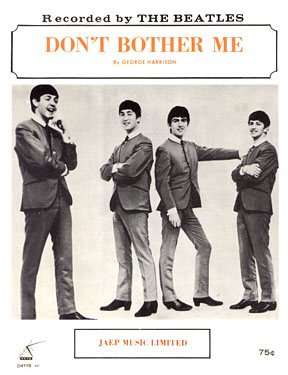 This 1969 interview with George Harrison by David Wigg explains in detail his experience as a songwriter for The Beatles. Apart from the song “Cry For A Shadow,” which was an instrumental that the early Beatles recorded in Hamburg, Germany in June of 1961 and credited as a “Lennon / Harrison” composition, George's first official contribution to The Beatles catalog was “Don't Bother Me,” released in Britain on the November 1963 album “With The Beatles.” It was certainly worthy of inclusion among the “Lennon / McCartney” numbers on that album, as well as the groundbreaking “Meet The Beatles!” album in the US, but much growth and maturity was soon to appear in his compositions as the years progressed. This 1969 interview with George Harrison by David Wigg explains in detail his experience as a songwriter for The Beatles. Apart from the song “Cry For A Shadow,” which was an instrumental that the early Beatles recorded in Hamburg, Germany in June of 1961 and credited as a “Lennon / Harrison” composition, George's first official contribution to The Beatles catalog was “Don't Bother Me,” released in Britain on the November 1963 album “With The Beatles.” It was certainly worthy of inclusion among the “Lennon / McCartney” numbers on that album, as well as the groundbreaking “Meet The Beatles!” album in the US, but much growth and maturity was soon to appear in his compositions as the years progressed.
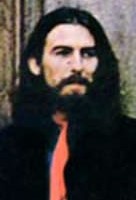 George continues: “It's by writing them, the same as writing books or writing articles or painting, the more you do it the better, or the more you can understand how to do it. I used to just write songs – I still do – I just write a song and it just comes out however it wants to. And some of them are catchy songs, like 'Here Comes The Sun,' and some of them aren't, but to me there's just songs and I just write them. And some will be considered as good by, maybe, the masses, and some won't, but to me they're just songs; things that are there that have to be got out.” George continues: “It's by writing them, the same as writing books or writing articles or painting, the more you do it the better, or the more you can understand how to do it. I used to just write songs – I still do – I just write a song and it just comes out however it wants to. And some of them are catchy songs, like 'Here Comes The Sun,' and some of them aren't, but to me there's just songs and I just write them. And some will be considered as good by, maybe, the masses, and some won't, but to me they're just songs; things that are there that have to be got out.”
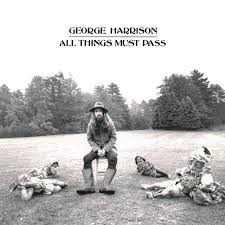 Of the twenty-three George Harrison songs that The Beatles officially released, “the masses” gradually began to respect them more and more, the simple reason being that 'practice makes perfect.' Some songs that he introduced to the group, such as “You Know What To Do,” “Not Guilty,” “All Things Must Pass” and “Hear Me Lord,” were passed over by The Beatles and never released, some not considered even for a moment as being good enough. George, however, persisted and improved in his songwriting skill. The last song he ever offered for the group to record, the above mentioned masterpiece “Here Comes The Sun,” reveals a successful solo recording artist in the making. Of the twenty-three George Harrison songs that The Beatles officially released, “the masses” gradually began to respect them more and more, the simple reason being that 'practice makes perfect.' Some songs that he introduced to the group, such as “You Know What To Do,” “Not Guilty,” “All Things Must Pass” and “Hear Me Lord,” were passed over by The Beatles and never released, some not considered even for a moment as being good enough. George, however, persisted and improved in his songwriting skill. The last song he ever offered for the group to record, the above mentioned masterpiece “Here Comes The Sun,” reveals a successful solo recording artist in the making.
Songwriting History
In his 1979 book "I Me Mine," George explains in detail the writing of the song. "'Here Comes The Sun' was written at the time when Apple was getting like school, where we had to go and be businessmen: 'Sign this' and 'sign that.' Anyway, it seems as if winter in England goes on forever; by the time spring comes you really deserve it. So one day I decided I was going to sag off Apple and I went over to Eric Clapton's house. The relief of not having to go and see all those dopey accountants was wonderful, and I walked around the garden with one of Eric's acoustic guitars and wrote 'Here Comes The Sun.'"
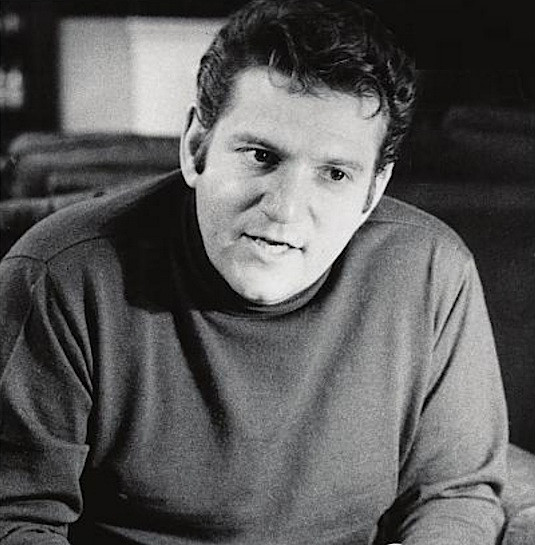 With the hiring of Allen Klein to sort out the legal and financial affairs of The Beatles and their fledgling company Apple Corps., the band members found themselves immersed in business meetings and overall drudgery in the early months of 1969. “As time went by, the atmosphere at Apple became terrible,” Apple secretary Dee Meehan recalls in the book “The Beatles Off The Record.” “Klein was really mean,” she continues. “He just moved in and started firing people.” George Harrison stated at the time, “Personally, I hope to get to the point where I can completely retire from the business side of things. Business is one thing, writing and creating, which we all want to do, is another thing entirely.” With the hiring of Allen Klein to sort out the legal and financial affairs of The Beatles and their fledgling company Apple Corps., the band members found themselves immersed in business meetings and overall drudgery in the early months of 1969. “As time went by, the atmosphere at Apple became terrible,” Apple secretary Dee Meehan recalls in the book “The Beatles Off The Record.” “Klein was really mean,” she continues. “He just moved in and started firing people.” George Harrison stated at the time, “Personally, I hope to get to the point where I can completely retire from the business side of things. Business is one thing, writing and creating, which we all want to do, is another thing entirely.”
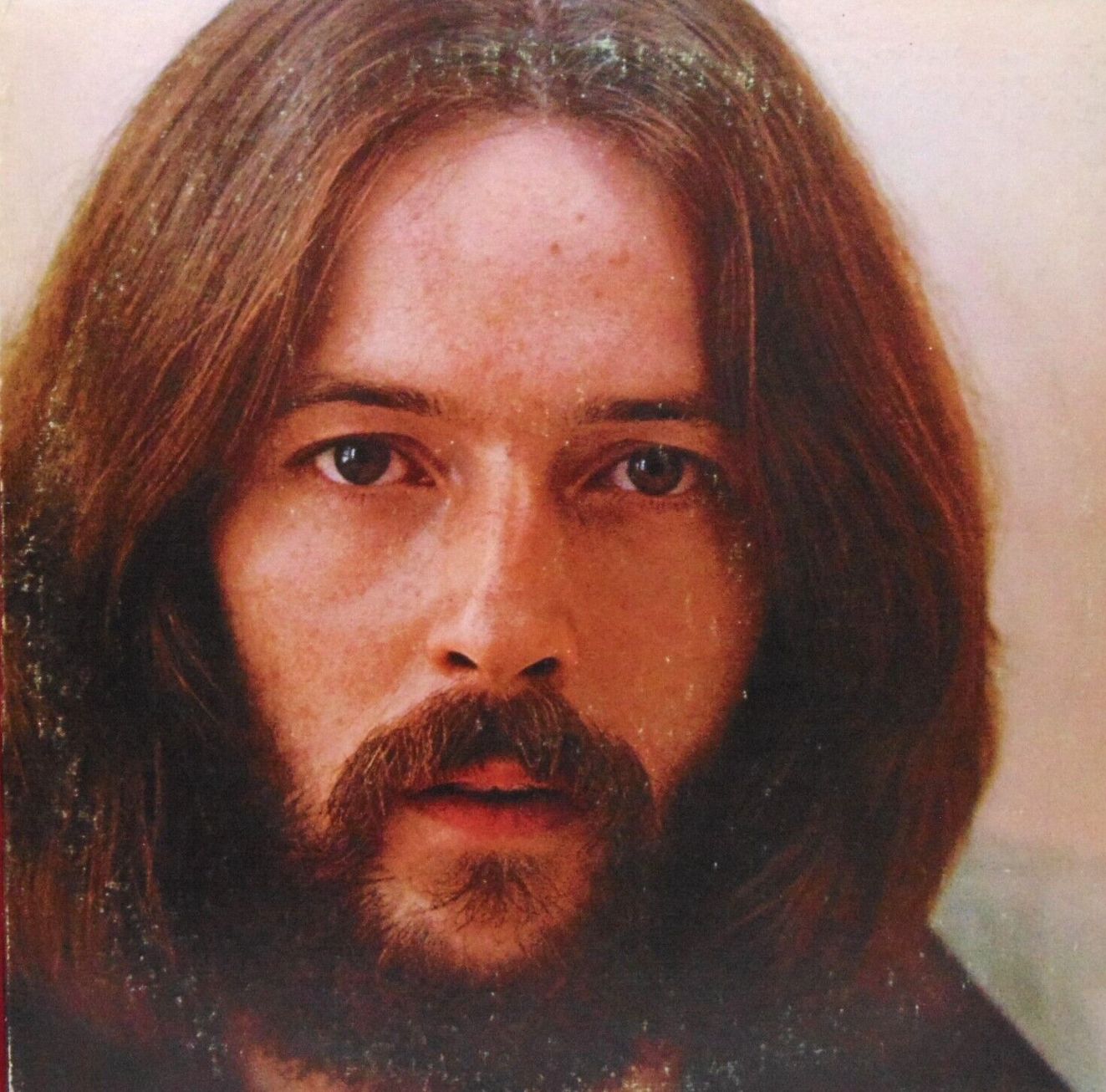 With this in mind, George decided to just not show up for a scheduled Apple business meeting in early Spring, likely April of 1969, and instead went to visit Eric Clapton at his “Hurtwood Edge” home in Ewhurst, Surrey, which was about a half-hour's drive, or 20 miles south, from George's 'Kinfauns' home. “We'd really been through hell with business and it was really heavy,” George stated at the time. “And on this day, I just felt that I had been slagging off from school. I just didn't come in one day and the release of being in the sun made the song just come to me. It was a bit like 'If I Needed Someone,' you know, the basic riff going through it, you know all those 'Bells Of Rhymney' Byrds-type things. So, that's how I see it, anyway. It's quite vintage." As he had done on his "Rubber Soul" track "If I Needed Someone," George wrote "Here Comes The Sun" by experimenting with the D major chord with a capo on the seventh fret of one of Eric Clapton's acoustic guitars. With this in mind, George decided to just not show up for a scheduled Apple business meeting in early Spring, likely April of 1969, and instead went to visit Eric Clapton at his “Hurtwood Edge” home in Ewhurst, Surrey, which was about a half-hour's drive, or 20 miles south, from George's 'Kinfauns' home. “We'd really been through hell with business and it was really heavy,” George stated at the time. “And on this day, I just felt that I had been slagging off from school. I just didn't come in one day and the release of being in the sun made the song just come to me. It was a bit like 'If I Needed Someone,' you know, the basic riff going through it, you know all those 'Bells Of Rhymney' Byrds-type things. So, that's how I see it, anyway. It's quite vintage." As he had done on his "Rubber Soul" track "If I Needed Someone," George wrote "Here Comes The Sun" by experimenting with the D major chord with a capo on the seventh fret of one of Eric Clapton's acoustic guitars.
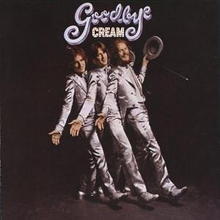 In Eric Clapton's biography, he himself recalls that day's events. “It was a beautiful spring morning, and we were sitting at the top of a big field at the bottom of the garden. We had our guitars and were just strumming away when he started singing 'de da de de, it's been a long cold lonely winter,' and bit by bit he fleshed it out, until it was time for lunch.” In Martin Scorsese's documentary "Living In The Material World," Eric adds: "I think it was April...I just watched this come to life." Part of the 'fleshing out' that George needed to do included adding a winding guitar riff very reminiscent of what was included in the song “Badge,” which was co-written by himself and Eric in 1968 and included on Cream's final album “Goodbye.” In Eric Clapton's biography, he himself recalls that day's events. “It was a beautiful spring morning, and we were sitting at the top of a big field at the bottom of the garden. We had our guitars and were just strumming away when he started singing 'de da de de, it's been a long cold lonely winter,' and bit by bit he fleshed it out, until it was time for lunch.” In Martin Scorsese's documentary "Living In The Material World," Eric adds: "I think it was April...I just watched this come to life." Part of the 'fleshing out' that George needed to do included adding a winding guitar riff very reminiscent of what was included in the song “Badge,” which was co-written by himself and Eric in 1968 and included on Cream's final album “Goodbye.”
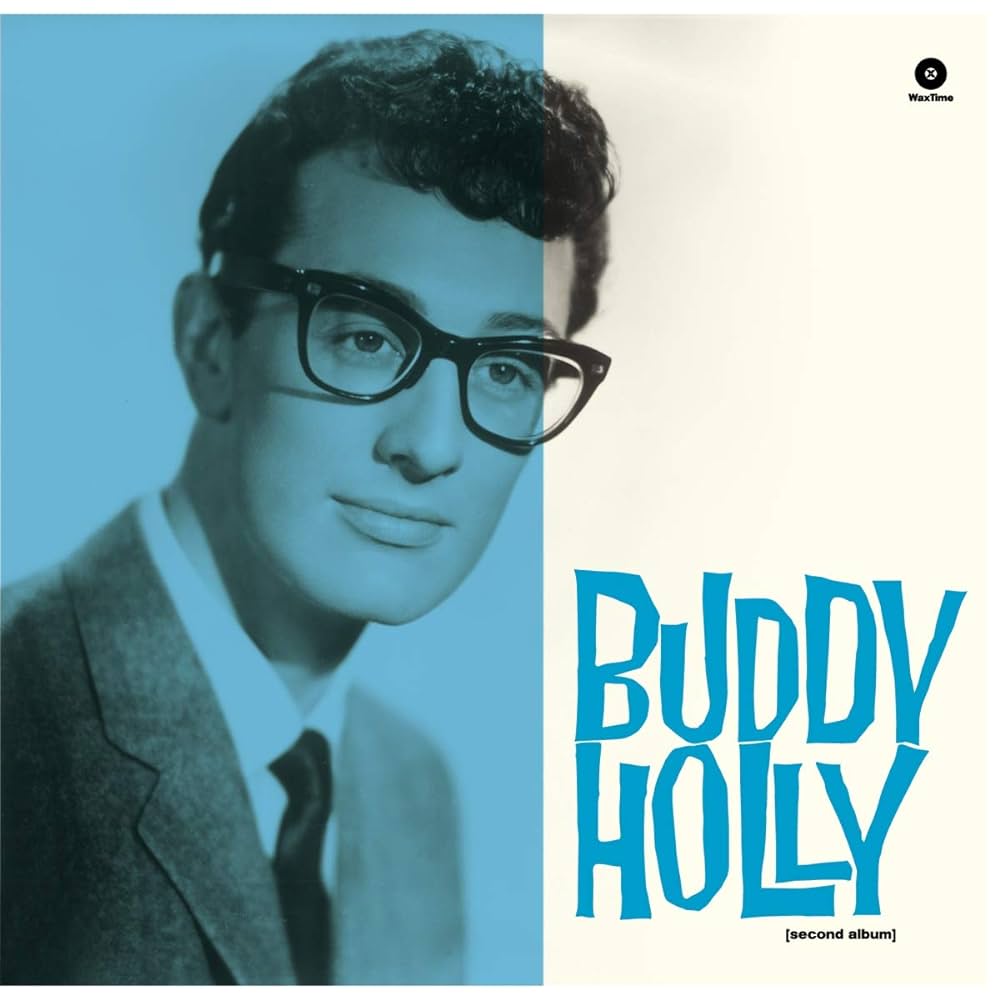 Other than “Badge” and The Byrds' song “The Bells Of Rhymney,” George's inspiration was also thought to have come from other sources. “It reminds me of Buddy Holly, in a way,” John Lennon stated at the time. “This song is just the way he's progressing, you know. He's writing all kinds of songs and once the door opens, the floodgates open.” Regarding Buddy Holly, George himself had once stated: "One of the greatest people for me was Buddy Holly. "Peggy Sue' - a little bit of that rubbed off. I no longer have a fear of changing from A to F," a chord sequence that does appear in "Here Comes The Sun" high up on the fretboard. Other than “Badge” and The Byrds' song “The Bells Of Rhymney,” George's inspiration was also thought to have come from other sources. “It reminds me of Buddy Holly, in a way,” John Lennon stated at the time. “This song is just the way he's progressing, you know. He's writing all kinds of songs and once the door opens, the floodgates open.” Regarding Buddy Holly, George himself had once stated: "One of the greatest people for me was Buddy Holly. "Peggy Sue' - a little bit of that rubbed off. I no longer have a fear of changing from A to F," a chord sequence that does appear in "Here Comes The Sun" high up on the fretboard.
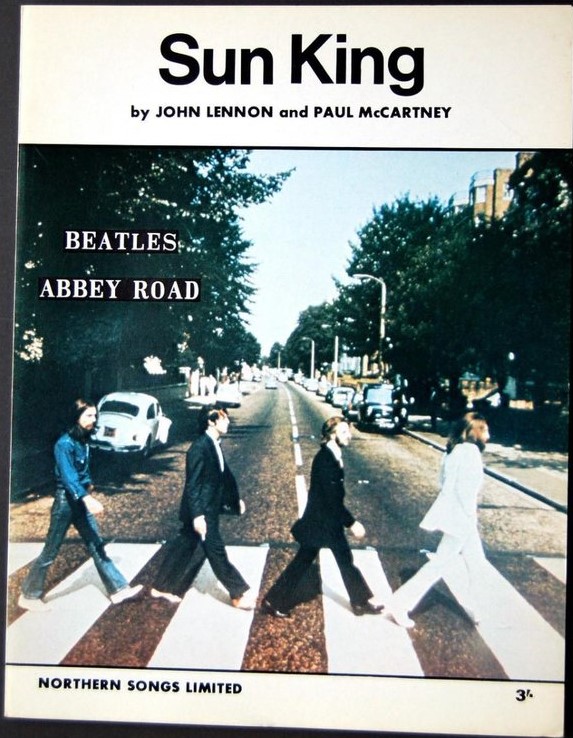 John himself may have been an inspiration for the song, if only subconsciously. When John was developing his song "Sun King" during the January 1969 sessions that evolved into the "Let It Be" film and album, he would sing the words "here comes the sun" while playing it on guitar. George may have had this in the back of his mind in Eric Clapton's garden on that day in April. In addition, the unusual time changes heard various times in the song, such as at the end of each chorus, could also be attributed to his recent love for Indian music. In a bonus segment in the documentary film "Living In The Material World," George's son Dhani Harrison observed that the rhythm in this section of the song when counted out, namely '123 / 123 / 123 / 123 / 12 / 1,' is "almost like a Tihai," this being a rhythmic cadence found in Indian classical music. John himself may have been an inspiration for the song, if only subconsciously. When John was developing his song "Sun King" during the January 1969 sessions that evolved into the "Let It Be" film and album, he would sing the words "here comes the sun" while playing it on guitar. George may have had this in the back of his mind in Eric Clapton's garden on that day in April. In addition, the unusual time changes heard various times in the song, such as at the end of each chorus, could also be attributed to his recent love for Indian music. In a bonus segment in the documentary film "Living In The Material World," George's son Dhani Harrison observed that the rhythm in this section of the song when counted out, namely '123 / 123 / 123 / 123 / 12 / 1,' is "almost like a Tihai," this being a rhythmic cadence found in Indian classical music.
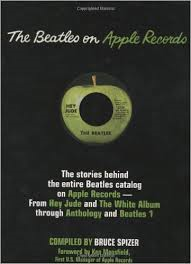 "It was just the release of that tension that had been building up on me," George stated in interview. "It was the first time I'd played the guitar for a couple of weeks, because I'd been so busy. It just came and I finished it later when I was on holiday in Sardinia." This Mediteranean island vacation occuring in June of 1969 according to Bruce Spizer's book “The Beatles On Apple Records,” the guitarist returning home two weeks before beginning recording the song with The Beatles. Having written the finished lyrics on stationary with letterhead that included a Hindu drawing and spiritual writings, George described what would be his “doot-n-doo-doo” singing in the refrain as “scoobie doobie.” To identify his intricate guitar work in the bridge, he humorously wrote “son of Badge” as a reminder of the “Badge”-like guitar work that would go there. Other than his transposing the second and third verses, the lyrics and structure of the song were complete at the time this lyric sheet was jotted down. "It was just the release of that tension that had been building up on me," George stated in interview. "It was the first time I'd played the guitar for a couple of weeks, because I'd been so busy. It just came and I finished it later when I was on holiday in Sardinia." This Mediteranean island vacation occuring in June of 1969 according to Bruce Spizer's book “The Beatles On Apple Records,” the guitarist returning home two weeks before beginning recording the song with The Beatles. Having written the finished lyrics on stationary with letterhead that included a Hindu drawing and spiritual writings, George described what would be his “doot-n-doo-doo” singing in the refrain as “scoobie doobie.” To identify his intricate guitar work in the bridge, he humorously wrote “son of Badge” as a reminder of the “Badge”-like guitar work that would go there. Other than his transposing the second and third verses, the lyrics and structure of the song were complete at the time this lyric sheet was jotted down.
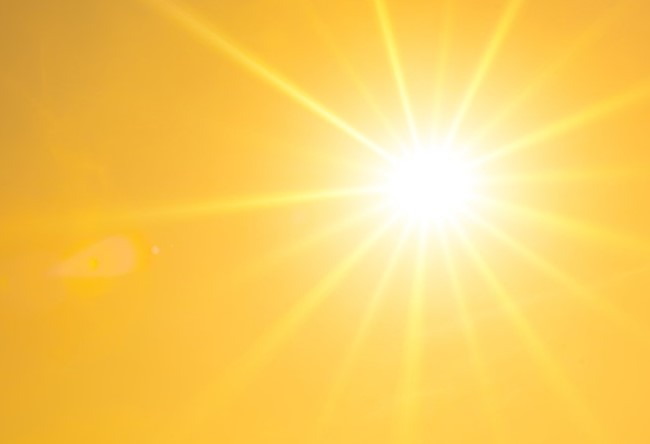 Since data from the London area shows the month of April in 1969 as setting the record for most sunlight hours for all of the 1960's, and that February and March were unusually cold, “Here Comes The Sun” appears to have been written by George between April and June of 1969. “A long cold lonely winter” had indeed just ended at that time! Since data from the London area shows the month of April in 1969 as setting the record for most sunlight hours for all of the 1960's, and that February and March were unusually cold, “Here Comes The Sun” appears to have been written by George between April and June of 1969. “A long cold lonely winter” had indeed just ended at that time!
Recording History
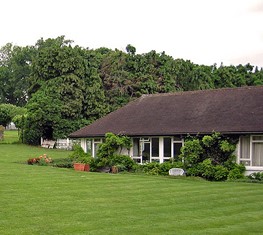 It may have been George's recent custom to sit down in EMI Studios and record demos for the compositions he was offering to The Beatles but, in this case, he did not. However, a simple acoustic guitar instrumental demo has surfaced which apparently had been recorded in George's "Kinfauns" home. He hadn't quite perfected all of the intricate parts yet, which were played high up on the neck with a capo up on the seventh fret, but he was close. And it sounded beautiful! It may have been George's recent custom to sit down in EMI Studios and record demos for the compositions he was offering to The Beatles but, in this case, he did not. However, a simple acoustic guitar instrumental demo has surfaced which apparently had been recorded in George's "Kinfauns" home. He hadn't quite perfected all of the intricate parts yet, which were played high up on the neck with a capo up on the seventh fret, but he was close. And it sounded beautiful!
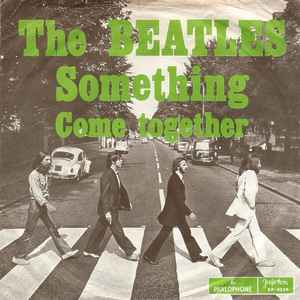 Having decided to record one final Beatles album, the group began these sessions on July 1st, 1969. One week into the sessions, on July 7th, 1969, George brought in “Here Comes The Sun” as his second contribution to the album, his “Something” having already been started. They entered EMI Studio Two at 2:30 pm, this being Ringo's 29th Birthday, to focus entirely on George's new song, although only three Beatles were present because of John's recuperating from his recent car accident in Scotland. Having decided to record one final Beatles album, the group began these sessions on July 1st, 1969. One week into the sessions, on July 7th, 1969, George brought in “Here Comes The Sun” as his second contribution to the album, his “Something” having already been started. They entered EMI Studio Two at 2:30 pm, this being Ringo's 29th Birthday, to focus entirely on George's new song, although only three Beatles were present because of John's recuperating from his recent car accident in Scotland.
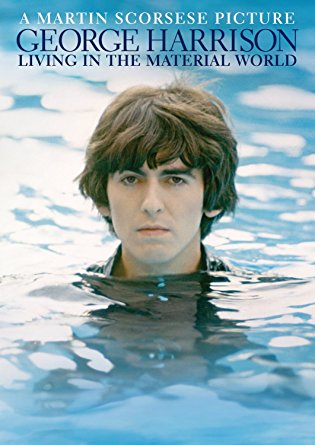 Before recording commenced, much instruction needed to be given to George's bandmates, especially to the birthday boy because of the tricky timing contained in the song. In the documentary “Living In The Material World,” Ringo relates: “He said, 'Oh, I've got this song. It's like seven-and-a-half time.' 'Yeah, so?' You know, he might as well have talked to me in Arabic, you know what I mean?...I had to find some way that I could physically do it and do it every time so it came off on the time. That's one of those Indian tricks. I had no way of going, 'one, two, three, four, five, six, seven...' It's not in my brain. So as long as I go (demonstrates), 'OK, that's seven. Got it!'” Before recording commenced, much instruction needed to be given to George's bandmates, especially to the birthday boy because of the tricky timing contained in the song. In the documentary “Living In The Material World,” Ringo relates: “He said, 'Oh, I've got this song. It's like seven-and-a-half time.' 'Yeah, so?' You know, he might as well have talked to me in Arabic, you know what I mean?...I had to find some way that I could physically do it and do it every time so it came off on the time. That's one of those Indian tricks. I had no way of going, 'one, two, three, four, five, six, seven...' It's not in my brain. So as long as I go (demonstrates), 'OK, that's seven. Got it!'”
 Once that was worked out, thirteen takes of the rhythm track were recorded onto an eight-track machine, with Paul on bass (track one), Ringo on drums (track two), George on acoustic guitar (track three) and George's guide vocals (track eight). Author Mark Lewisohn relates in his book “The Beatles Recording Sessions” that “the original tapes reveal a lighthearted atmosphere. When take one broke down, George exclaimed, sadly, 'One of me best beginnings, that!' And at the end of take four, Ringo...called up to the control room 'Turn me down a little bit, if you don't mind' – meaning, reduce the level of the drum sound in his headphones.” Once that was worked out, thirteen takes of the rhythm track were recorded onto an eight-track machine, with Paul on bass (track one), Ringo on drums (track two), George on acoustic guitar (track three) and George's guide vocals (track eight). Author Mark Lewisohn relates in his book “The Beatles Recording Sessions” that “the original tapes reveal a lighthearted atmosphere. When take one broke down, George exclaimed, sadly, 'One of me best beginnings, that!' And at the end of take four, Ringo...called up to the control room 'Turn me down a little bit, if you don't mind' – meaning, reduce the level of the drum sound in his headphones.”
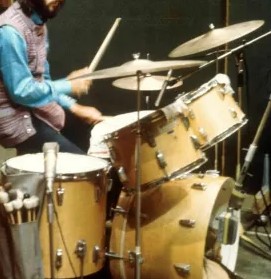 "Take nine," which is included in various "Abbey Road" 50th Anniversary editions, shows that there were still some bugs to be worked out, despite meeting George Martin's approval at the time. Although minor arrangement details were needed, the primary problem was Ringo's drum work. It is evident that he was still being tripped up by the timing of the song's bridge, leaving small gaps in his playing to keep his place. As if to allow for Ringo to practice, the guitarist directs his bandmates through four extra chord sequences in the bridge until Ringo clumsily lands on his feet just before the final verse begins. "Take 13," which was announced as "take 12 and a half" for superstitious reasons, was deemed the best, over which George decided to overdub his acoustic guitar part onto track four of the tape. Perfecting this overdub took up the last hour of the session, which ended at 11:45 that evening. "Take nine," which is included in various "Abbey Road" 50th Anniversary editions, shows that there were still some bugs to be worked out, despite meeting George Martin's approval at the time. Although minor arrangement details were needed, the primary problem was Ringo's drum work. It is evident that he was still being tripped up by the timing of the song's bridge, leaving small gaps in his playing to keep his place. As if to allow for Ringo to practice, the guitarist directs his bandmates through four extra chord sequences in the bridge until Ringo clumsily lands on his feet just before the final verse begins. "Take 13," which was announced as "take 12 and a half" for superstitious reasons, was deemed the best, over which George decided to overdub his acoustic guitar part onto track four of the tape. Perfecting this overdub took up the last hour of the session, which ended at 11:45 that evening.
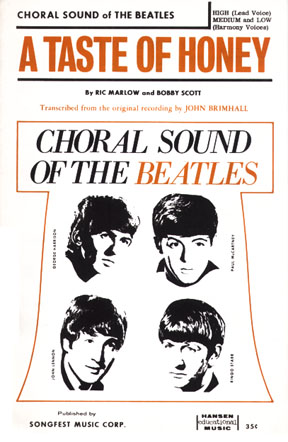 On the following day, July 8th, 1969, more attention was given to “Here Comes The Sun,” George, Paul and Ringo entering EMI Studio Two again at 2:30 pm. Onto track five of the tape, Ringo added extra drum fills (possibly to fill in drum gaps he left in the bridge of the song during the rhythm track) along with George playing electric guitar through a Leslie speaker. George then recorded a new lead vocal performance onto track six, complete with "doot-n-doo-doo" accentuations reminiscent of the backing vocals on The Beatles' cover of "A Taste Of Honey" from their first album. George and Paul then supplied the harmonized backing vocals for "Here Comes The Sun" on track seven and then, since it was just the two of them without John, double-tracked them onto track eight to make the harmonies sound fuller. George's guide vocals from the rhythm track, therefore, were wiped from track eight. On the following day, July 8th, 1969, more attention was given to “Here Comes The Sun,” George, Paul and Ringo entering EMI Studio Two again at 2:30 pm. Onto track five of the tape, Ringo added extra drum fills (possibly to fill in drum gaps he left in the bridge of the song during the rhythm track) along with George playing electric guitar through a Leslie speaker. George then recorded a new lead vocal performance onto track six, complete with "doot-n-doo-doo" accentuations reminiscent of the backing vocals on The Beatles' cover of "A Taste Of Honey" from their first album. George and Paul then supplied the harmonized backing vocals for "Here Comes The Sun" on track seven and then, since it was just the two of them without John, double-tracked them onto track eight to make the harmonies sound fuller. George's guide vocals from the rhythm track, therefore, were wiped from track eight.
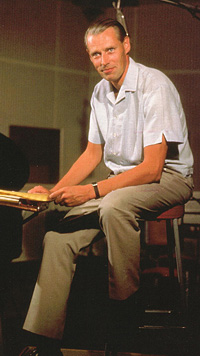 This filled up all eight tracks of the tape which meant that a reduction mix needed to be made to open up more tracks for future overdubs. Two attempts at the reduction mix were made, which resulted in the second attempt, signified as "take 15," becoming the master thus far. This mix combined Ringo's added drum fills and George's electric guitar on track five with George's acoustic guitar on track three. The session was complete at 10:45 pm, but they spent the next half-hour in the control room while the engineering team of George Martin, Phil McDonald and John Kurlander prepared a rough mono mix for George to take home and examine. This would help him determine what else he wanted to add to the song. At 11:15 pm, everyone had left for the night. This filled up all eight tracks of the tape which meant that a reduction mix needed to be made to open up more tracks for future overdubs. Two attempts at the reduction mix were made, which resulted in the second attempt, signified as "take 15," becoming the master thus far. This mix combined Ringo's added drum fills and George's electric guitar on track five with George's acoustic guitar on track three. The session was complete at 10:45 pm, but they spent the next half-hour in the control room while the engineering team of George Martin, Phil McDonald and John Kurlander prepared a rough mono mix for George to take home and examine. This would help him determine what else he wanted to add to the song. At 11:15 pm, everyone had left for the night.
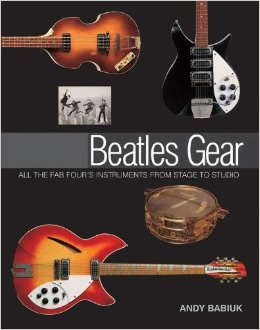 Just over a week later, on July 16th, 1969, The Beatles returned to “Here Comes The Sun” for more overdub work in EMI Studio Three, this session beginning at 2:30 pm. The first thing that George decided was needed in the song was a round of intricate hand-clapping, this being recorded onto the newly vacated track eight. George painstakingly took the necessary time to instruct Paul, Ringo and producer Glyn Johns on the pattern he wanted the handclaps to be performed during the complicated bridge section of the song. Engineer Alan Parsons, in an interview with author Andy Babiuk in 1998, remembers how it took a long time for them to get it right. In the book “Beatles Gear” he relates: “Glyn Johns was out there trying to do it – and he dropped out because he kept screwing up.” Interestingly, even though John Lennon had recovered from his accident and had returned to recording sessions by this time, studio documentation intimates that he was either not present on this day or declined to participate. Just over a week later, on July 16th, 1969, The Beatles returned to “Here Comes The Sun” for more overdub work in EMI Studio Three, this session beginning at 2:30 pm. The first thing that George decided was needed in the song was a round of intricate hand-clapping, this being recorded onto the newly vacated track eight. George painstakingly took the necessary time to instruct Paul, Ringo and producer Glyn Johns on the pattern he wanted the handclaps to be performed during the complicated bridge section of the song. Engineer Alan Parsons, in an interview with author Andy Babiuk in 1998, remembers how it took a long time for them to get it right. In the book “Beatles Gear” he relates: “Glyn Johns was out there trying to do it – and he dropped out because he kept screwing up.” Interestingly, even though John Lennon had recovered from his accident and had returned to recording sessions by this time, studio documentation intimates that he was either not present on this day or declined to participate.
Once this was complete to George's satisfaction, he sat down at a harmonium to add one further overdub onto the newly opened track five. By 7 pm, this session was complete, but they all ushered themselves immediately into EMI Studio Two for more work on George's other “Abbey Road” song “Something.”
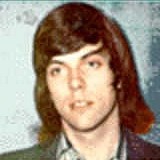 While work progressed on various other songs for the album, “Here Comes The Sun” took a back seat for the next couple weeks or so. George knew he wanted to add more to the song but wasn't sure what. Therefore, on August 4th, 1969, after the group recorded their beautiful three-part harmonies for the song “Because,” George ducked into the control room of EMI Studio Three at 7:15 pm with engineers Phil McDonald and Alan Parsons to create a stereo mix of the song, as well as “Something,” for him to examine and determine what could be added. At 8:45 pm both stereo mixes were done, documentation showing these mixes as being “produced” by George Harrison. While work progressed on various other songs for the album, “Here Comes The Sun” took a back seat for the next couple weeks or so. George knew he wanted to add more to the song but wasn't sure what. Therefore, on August 4th, 1969, after the group recorded their beautiful three-part harmonies for the song “Because,” George ducked into the control room of EMI Studio Three at 7:15 pm with engineers Phil McDonald and Alan Parsons to create a stereo mix of the song, as well as “Something,” for him to examine and determine what could be added. At 8:45 pm both stereo mixes were done, documentation showing these mixes as being “produced” by George Harrison.
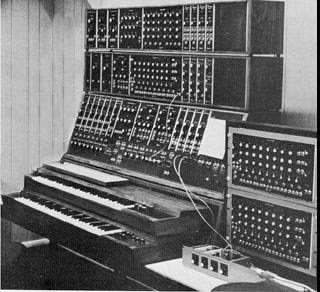 Within the next two days, George decided first of all that more guitar work was needed for “Here Comes The Sun.” Therefore, on August 6th, 1969, George entered EMI Studio Three at 2:30 pm to perform this overdub while, simultaneously in EMI Studio Two, Paul was adding overdubs to his song “Maxwell's Silver Hammer,” playing George's Moog synthesizer. Engineer Tony Clark, in the book “The Beatles Recording Sessions,” explains: “They kept two studios running and I would be asked to sit in Studio Two or Three – usually Three – just to be there, at The Beatles' beck and call, whenever someone wanted to come in and do an overdub. At this stage of the album I don't think I saw the four of them together.” This guitar overdub session, with George playing his Rosewood Fender Telecaster through a rotating B3 speaker onto track six, ran from 2:30 to 11 pm. Within the next two days, George decided first of all that more guitar work was needed for “Here Comes The Sun.” Therefore, on August 6th, 1969, George entered EMI Studio Three at 2:30 pm to perform this overdub while, simultaneously in EMI Studio Two, Paul was adding overdubs to his song “Maxwell's Silver Hammer,” playing George's Moog synthesizer. Engineer Tony Clark, in the book “The Beatles Recording Sessions,” explains: “They kept two studios running and I would be asked to sit in Studio Two or Three – usually Three – just to be there, at The Beatles' beck and call, whenever someone wanted to come in and do an overdub. At this stage of the album I don't think I saw the four of them together.” This guitar overdub session, with George playing his Rosewood Fender Telecaster through a rotating B3 speaker onto track six, ran from 2:30 to 11 pm.
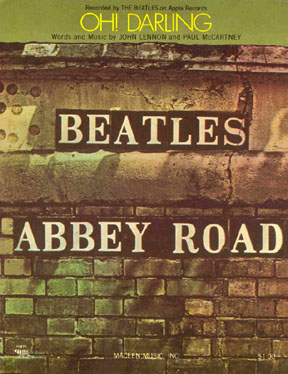 Interestingly, this overdub included a lead guitar solo that was recorded onto the mostly-instrumental bridge section of the song. Not quite satisfied with this performance, George decided he would add another guitar overdub to the song on August 11th, 1969, the deadline for the finished album getter ever closer. The Beatles entered EMI Studio Two at the usual 2:30 pm and, after putting more overdubs onto "I Want You (She's So Heavy)" and "Oh! Darling," George went to laying down this further "Here Comes The Sun" guitar overdub onto track seven. After more control room work was performed, this session ended at 11:30 pm. Interestingly, this overdub included a lead guitar solo that was recorded onto the mostly-instrumental bridge section of the song. Not quite satisfied with this performance, George decided he would add another guitar overdub to the song on August 11th, 1969, the deadline for the finished album getter ever closer. The Beatles entered EMI Studio Two at the usual 2:30 pm and, after putting more overdubs onto "I Want You (She's So Heavy)" and "Oh! Darling," George went to laying down this further "Here Comes The Sun" guitar overdub onto track seven. After more control room work was performed, this session ended at 11:30 pm.
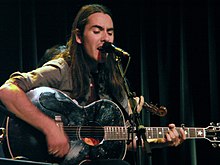 George eventually decided, however, that both of these later guitar overdubs were not suitable for the bridge of the song. To make sure these guitar parts didn't get used in the final mix, George wrote this instruction on the actual tape box: "Don't use guitars for solo from 6 + 7." George later decided to fill this section with other instrumentation, as we'll see below, but this guitar solo was never recorded over and was left on the master eight-track tape on tracks six and seven. During a visit to what is now called "Abbey Road Studios" (formerly EMI) in 2012, producers George and Giles Martin, along with George Harrison's son Dhani Harrison, discovered this lost solo while listening to the original eight-track master of the song, this discovery being captured by the cameras during the making of a documentary segment. George eventually decided, however, that both of these later guitar overdubs were not suitable for the bridge of the song. To make sure these guitar parts didn't get used in the final mix, George wrote this instruction on the actual tape box: "Don't use guitars for solo from 6 + 7." George later decided to fill this section with other instrumentation, as we'll see below, but this guitar solo was never recorded over and was left on the master eight-track tape on tracks six and seven. During a visit to what is now called "Abbey Road Studios" (formerly EMI) in 2012, producers George and Giles Martin, along with George Harrison's son Dhani Harrison, discovered this lost solo while listening to the original eight-track master of the song, this discovery being captured by the cameras during the making of a documentary segment.
George, however, was very proud of both of his contributions to “Abbey Road.” So much so, in fact, that he labored over the arrangement and production so as to perfect both songs, possibly with the knowledge that this was likely going to be The Beatles final album and thereby wanting to make a good impression.
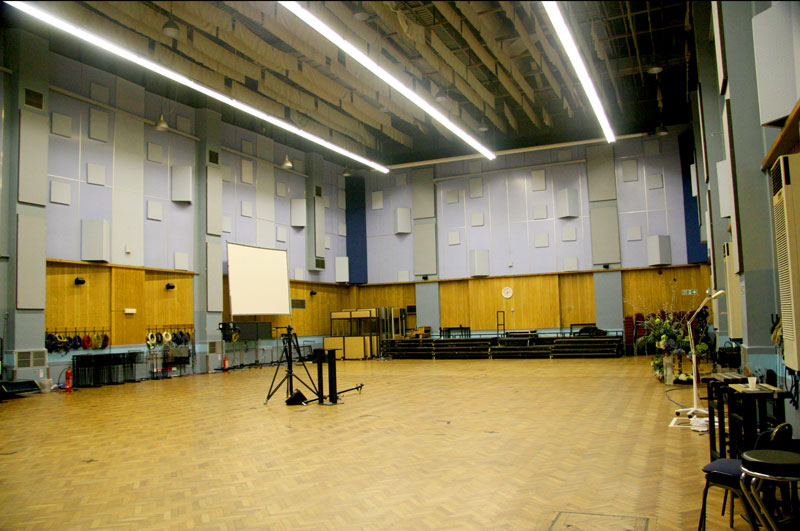 With this in mind, George decided to add an orchestral score to both songs. Three other songs on the album were requiring an orchestra as well so, for economical reasons, the classically-trained musicians recorded their performances for all of these songs on one day, August 15th, 1969. As outlined in the “Recording History” of the song “Something,” the orchestra was set up in the larger EMI Studio One while the performance was being recorded onto the eight-track recording console in EMI Studio Two, both studios linked together via recording lines being run, close-circuit television, and walkie-talkies. With this in mind, George decided to add an orchestral score to both songs. Three other songs on the album were requiring an orchestra as well so, for economical reasons, the classically-trained musicians recorded their performances for all of these songs on one day, August 15th, 1969. As outlined in the “Recording History” of the song “Something,” the orchestra was set up in the larger EMI Studio One while the performance was being recorded onto the eight-track recording console in EMI Studio Two, both studios linked together via recording lines being run, close-circuit television, and walkie-talkies.
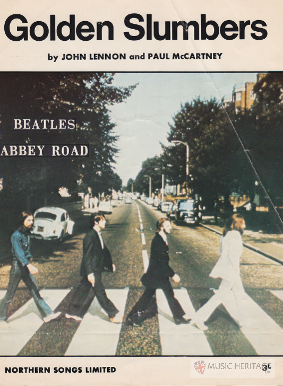 Two sessions were needed to get this all done on this day, the first session accommodating the songs “Golden Slumbers,” “Carry That Weight” and “The End,” and the later session for recording both of George's songs, “Something” and then “Here Comes The Sun.” There was an hour-and-a-half break between the sessions to give the musicians a rest, the later session beginning at 7 pm. After “Something” was complete, “Here Comes The Sun” received its orchestral overdub. Eight woodwind players recorded their parts on the open track four of the tape, while a nine-piece string section was recorded onto track five, thus erasing George's harmonium overdub from July 16th. Documentation and photographs show that George was busy shuttling between both studios during this session, playing a key role in making sure his songs were recorded to his liking, even acting as “producer” in Studio Two while George Martin was busy conducting the orchestra in Studio One. At 1:15 am the following morning, this overdub was complete, which finished off “Here Comes The Sun.” Two sessions were needed to get this all done on this day, the first session accommodating the songs “Golden Slumbers,” “Carry That Weight” and “The End,” and the later session for recording both of George's songs, “Something” and then “Here Comes The Sun.” There was an hour-and-a-half break between the sessions to give the musicians a rest, the later session beginning at 7 pm. After “Something” was complete, “Here Comes The Sun” received its orchestral overdub. Eight woodwind players recorded their parts on the open track four of the tape, while a nine-piece string section was recorded onto track five, thus erasing George's harmonium overdub from July 16th. Documentation and photographs show that George was busy shuttling between both studios during this session, playing a key role in making sure his songs were recorded to his liking, even acting as “producer” in Studio Two while George Martin was busy conducting the orchestra in Studio One. At 1:15 am the following morning, this overdub was complete, which finished off “Here Comes The Sun.”
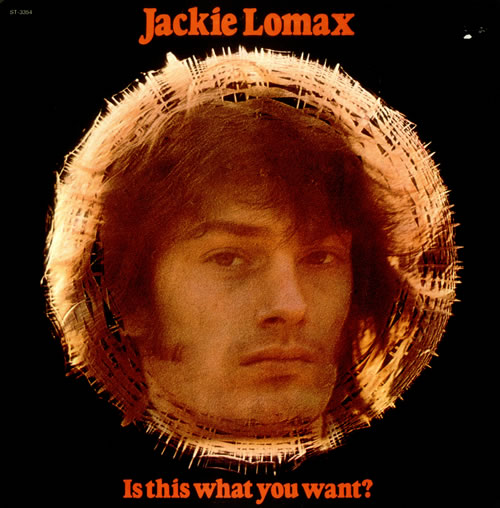 Or so you would think. Four days later, on August 19th, 1969, George wanted to add one more overdub onto the song before the final mix was made. “I first heard about the Moog synthesizer in America,” George states in the book “Beatles Anthology,” recalling his purchasing the instrument in November of 1968 while producing Jackie Lomax's debut album "Is This What You Want?" in Los Angeles. The instrument appears on several of the tracks of this album due to its sales representatives Paul Beaver and Bernie Krause bringing this cumbersome instrument to the sessions in order to spark George's interest. Former Beatles road manager Mal Evans, who was present in the studio at the time, predicted in the January 1969 edition of "The Beatles Book Monthly" fan magazine, "George couldn't resist the idea of ordering one. It will be installed at home. May well hear the results on 1969 Beatle records, folks." Or so you would think. Four days later, on August 19th, 1969, George wanted to add one more overdub onto the song before the final mix was made. “I first heard about the Moog synthesizer in America,” George states in the book “Beatles Anthology,” recalling his purchasing the instrument in November of 1968 while producing Jackie Lomax's debut album "Is This What You Want?" in Los Angeles. The instrument appears on several of the tracks of this album due to its sales representatives Paul Beaver and Bernie Krause bringing this cumbersome instrument to the sessions in order to spark George's interest. Former Beatles road manager Mal Evans, who was present in the studio at the time, predicted in the January 1969 edition of "The Beatles Book Monthly" fan magazine, "George couldn't resist the idea of ordering one. It will be installed at home. May well hear the results on 1969 Beatle records, folks."
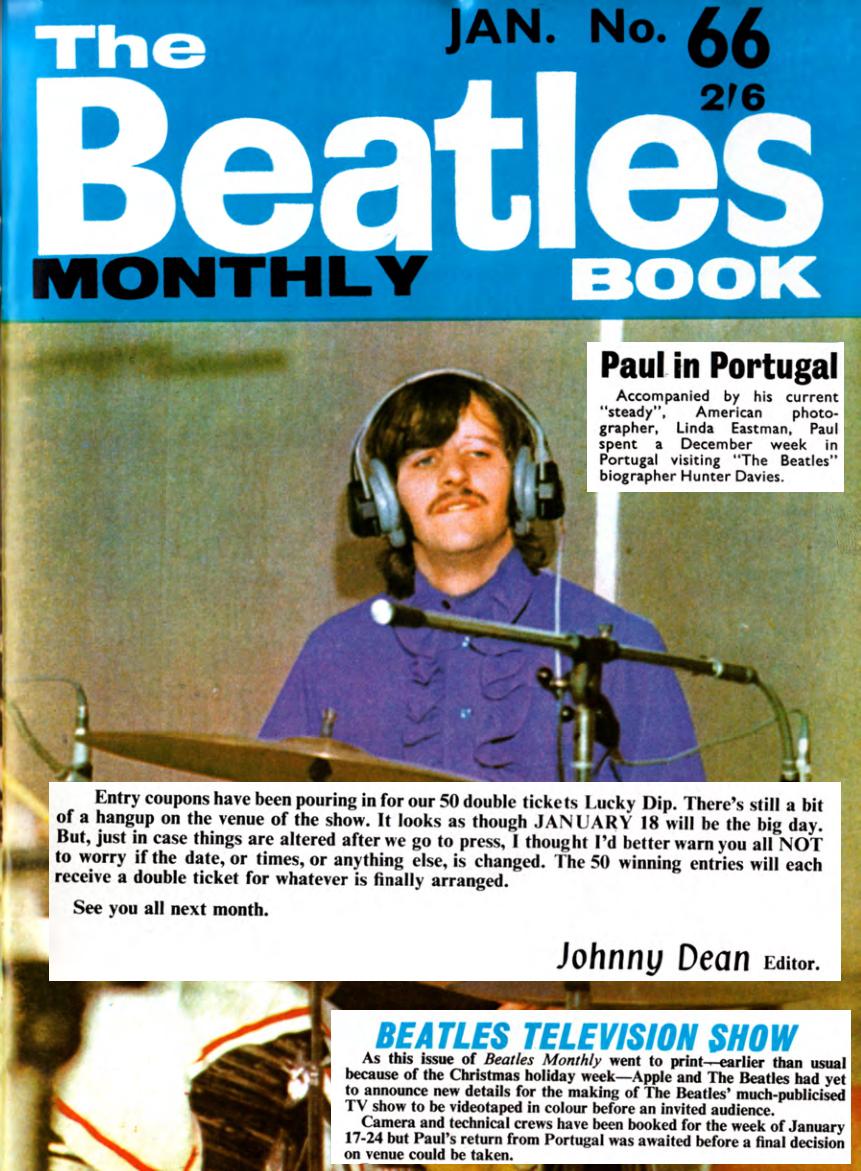 “I had to have mine made specially, because Mr. Moog had only just invented it. It was enormous, with hundreds of jackplugs and two keyboards. But it was one thing having one, and another trying to make it work. There wasn't an instruction manual, and even if there had been it would probably have been a couple of thousand pages long. I don't think even Mr. Moog knew how to get music out of it; it was more of a technical thing. When you listen to the sounds on songs like 'Here Comes The Sun,' it does do some good things, but they're all very kind of infant sounds.” “I had to have mine made specially, because Mr. Moog had only just invented it. It was enormous, with hundreds of jackplugs and two keyboards. But it was one thing having one, and another trying to make it work. There wasn't an instruction manual, and even if there had been it would probably have been a couple of thousand pages long. I don't think even Mr. Moog knew how to get music out of it; it was more of a technical thing. When you listen to the sounds on songs like 'Here Comes The Sun,' it does do some good things, but they're all very kind of infant sounds.”
 The book “Beatles Gear” specifies that “Here Comes The Sun” has a “lovely ribbon-assisted downward slide on the intro, and glorious synth sounds filling the 'sun, sun, sun' middle section.” The ribbon controller, as mentioned above, is described as “a long strip which induces changes in the sound being played depending on where it is touched and how the player's finger is then moved...like a violin and having to find every note." This synthesizer overdub was recorded onto track four of the tape, thus recording over the woodwind performance that was already allocated to that track wherever the synthesizer playing occurred. One trick that was used during this overdub was sticking some editing tape on the capstan of the tape machine used to create tape delay echo. This gave the synthesizer a slightly 'wobbled' sound. The book “Beatles Gear” specifies that “Here Comes The Sun” has a “lovely ribbon-assisted downward slide on the intro, and glorious synth sounds filling the 'sun, sun, sun' middle section.” The ribbon controller, as mentioned above, is described as “a long strip which induces changes in the sound being played depending on where it is touched and how the player's finger is then moved...like a violin and having to find every note." This synthesizer overdub was recorded onto track four of the tape, thus recording over the woodwind performance that was already allocated to that track wherever the synthesizer playing occurred. One trick that was used during this overdub was sticking some editing tape on the capstan of the tape machine used to create tape delay echo. This gave the synthesizer a slightly 'wobbled' sound.
 This synthesizer overdub was performed in EMI Studio Two on this day, the session beginning at 2 pm. This was primarily intended as a stereo mixing session for the album. However, since George insisted on adding this final overdub, it was done in the early morning hours of the following day, this session being a rather long one to facilitate the deadline for the finished album being very near. Immediately after the synthesizer overdubs were complete, the one and only stereo mix of the song was performed by George Martin and engineers Geoff Emerick, Phil McDonald and Alan Parsons. This mix was made with the tape played back at a slightly faster than normal speed, thus raising the song's pitch by roughly a quarter-tone in the process. The orchestral overdub was mixed at a somewhat low volume and George's guitar solo in the bridge, per his instructions on the tape box, was omitted entirely from the mix. This synthesizer overdub was performed in EMI Studio Two on this day, the session beginning at 2 pm. This was primarily intended as a stereo mixing session for the album. However, since George insisted on adding this final overdub, it was done in the early morning hours of the following day, this session being a rather long one to facilitate the deadline for the finished album being very near. Immediately after the synthesizer overdubs were complete, the one and only stereo mix of the song was performed by George Martin and engineers Geoff Emerick, Phil McDonald and Alan Parsons. This mix was made with the tape played back at a slightly faster than normal speed, thus raising the song's pitch by roughly a quarter-tone in the process. The orchestral overdub was mixed at a somewhat low volume and George's guitar solo in the bridge, per his instructions on the tape box, was omitted entirely from the mix.
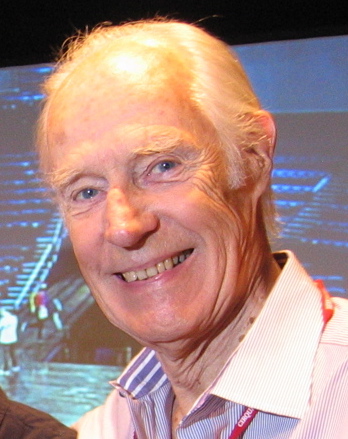 Sometime between 2004 and 2006, George Martin and his son Giles Martin returned to the master recording of the song to create an innovative mash-up entitled “Here Comes The Sun (with 'The Inner Light' transition)” for the Cirque du Soleil production as well as the resulting album “Love.” The entire “Here Comes The Sun” is heard in an amazing digitally remixed state, including the small phrase “and I say” from the final verse which was mixed out of the original version, with elements of “The Inner Light,” “Oh! Darling,” “Within You Without You” and “I Want You (She's So Heavy)” mixed in as well. Sometime between 2004 and 2006, George Martin and his son Giles Martin returned to the master recording of the song to create an innovative mash-up entitled “Here Comes The Sun (with 'The Inner Light' transition)” for the Cirque du Soleil production as well as the resulting album “Love.” The entire “Here Comes The Sun” is heard in an amazing digitally remixed state, including the small phrase “and I say” from the final verse which was mixed out of the original version, with elements of “The Inner Light,” “Oh! Darling,” “Within You Without You” and “I Want You (She's So Heavy)” mixed in as well.
 Giles Martin, along with engineer Sam Okell, returned to the master tapes of "Here Comes The Sun" sometime in 2019 to create a vibrant new stereo mix of the song for inclusion on various 50th Anniversary editions of "Abbey Road." In paying close attention to detail, the final "and I say" from George's lead vocal track was faded down to keep consistent with the originally released mix. While they were at it, they also created a mix of "take nine" of the rhythm track as recorded on July 7th, 1969. Giles Martin, along with engineer Sam Okell, returned to the master tapes of "Here Comes The Sun" sometime in 2019 to create a vibrant new stereo mix of the song for inclusion on various 50th Anniversary editions of "Abbey Road." In paying close attention to detail, the final "and I say" from George's lead vocal track was faded down to keep consistent with the originally released mix. While they were at it, they also created a mix of "take nine" of the rhythm track as recorded on July 7th, 1969.
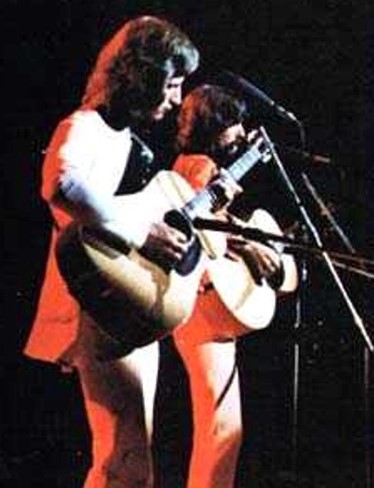 Three live versions of the song have also been recorded by George, the first being a lovely acoustic guitar duet he performed with Pete Ham of the Apple band Badfinger on August 1st, 1971 at Madison Square Garden in New York City for “The Concert For Bangla Desh." The second was on June 5th, 1987 at Wembley Arena in London for the Prince's Trust Rock Gala, George being joined by Eric Clapton, Elton John, Phil Collins and many others, the resulting album not being released in the US. The third live version was recorded sometime between December 1st and 17th, 1991, during George's brief tour of Japan, the results appearing on the release “Live In Japan.” His band featured Eric Clapton, Ray Cooper and various other musicians and vocalists. Three live versions of the song have also been recorded by George, the first being a lovely acoustic guitar duet he performed with Pete Ham of the Apple band Badfinger on August 1st, 1971 at Madison Square Garden in New York City for “The Concert For Bangla Desh." The second was on June 5th, 1987 at Wembley Arena in London for the Prince's Trust Rock Gala, George being joined by Eric Clapton, Elton John, Phil Collins and many others, the resulting album not being released in the US. The third live version was recorded sometime between December 1st and 17th, 1991, during George's brief tour of Japan, the results appearing on the release “Live In Japan.” His band featured Eric Clapton, Ray Cooper and various other musicians and vocalists.
Song Structure and Style
The structure of "Here Comes The Sun" consists of 'verse (instrumental)/ refrain/ verse/ refrain/ verse/ refrain/ bridge/ verse/ refrain/ refrain/ conclusion' (or abababcabbd). The first instrumental verse acts as an introduciton while the conclusion is an acoustic guitar instrumental sub-section of the bridge.
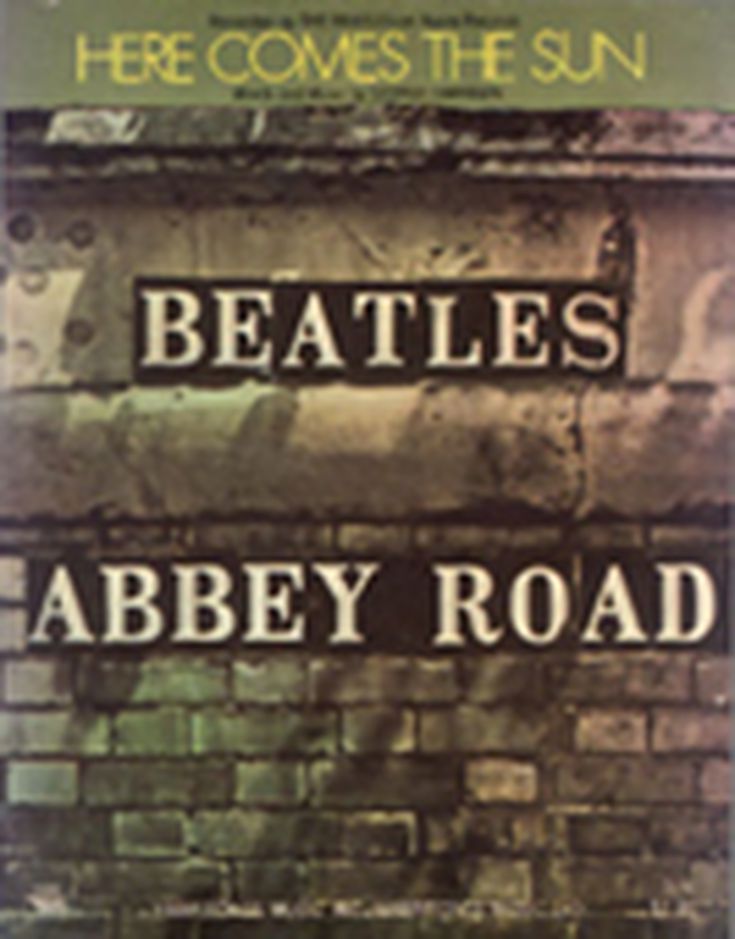 The instrumental verse is heard first, this being eight measures long as all of the verses are. George's double-tracked acoustic guitar comprises the first four measures, the downbeat to the first measure not being heard but only implied. The first actual beat of the song heard on the recording is the second beat of the first measure. George's overdubbed synthesizer appears in measures five through eight, this instrument playing a single-note melody line as heard within the acoustic guitar intro. The final note of the synthesizer descends, accomplished by George using the ribbon controller as mentioned above, in the eighth measure as the guitars momentarily disappear for good effect. Gentle tapping from George on his acoustic guitar parses out the rest of the beats for the eighth measure. The instrumental verse is heard first, this being eight measures long as all of the verses are. George's double-tracked acoustic guitar comprises the first four measures, the downbeat to the first measure not being heard but only implied. The first actual beat of the song heard on the recording is the second beat of the first measure. George's overdubbed synthesizer appears in measures five through eight, this instrument playing a single-note melody line as heard within the acoustic guitar intro. The final note of the synthesizer descends, accomplished by George using the ribbon controller as mentioned above, in the eighth measure as the guitars momentarily disappear for good effect. Gentle tapping from George on his acoustic guitar parses out the rest of the beats for the eighth measure.
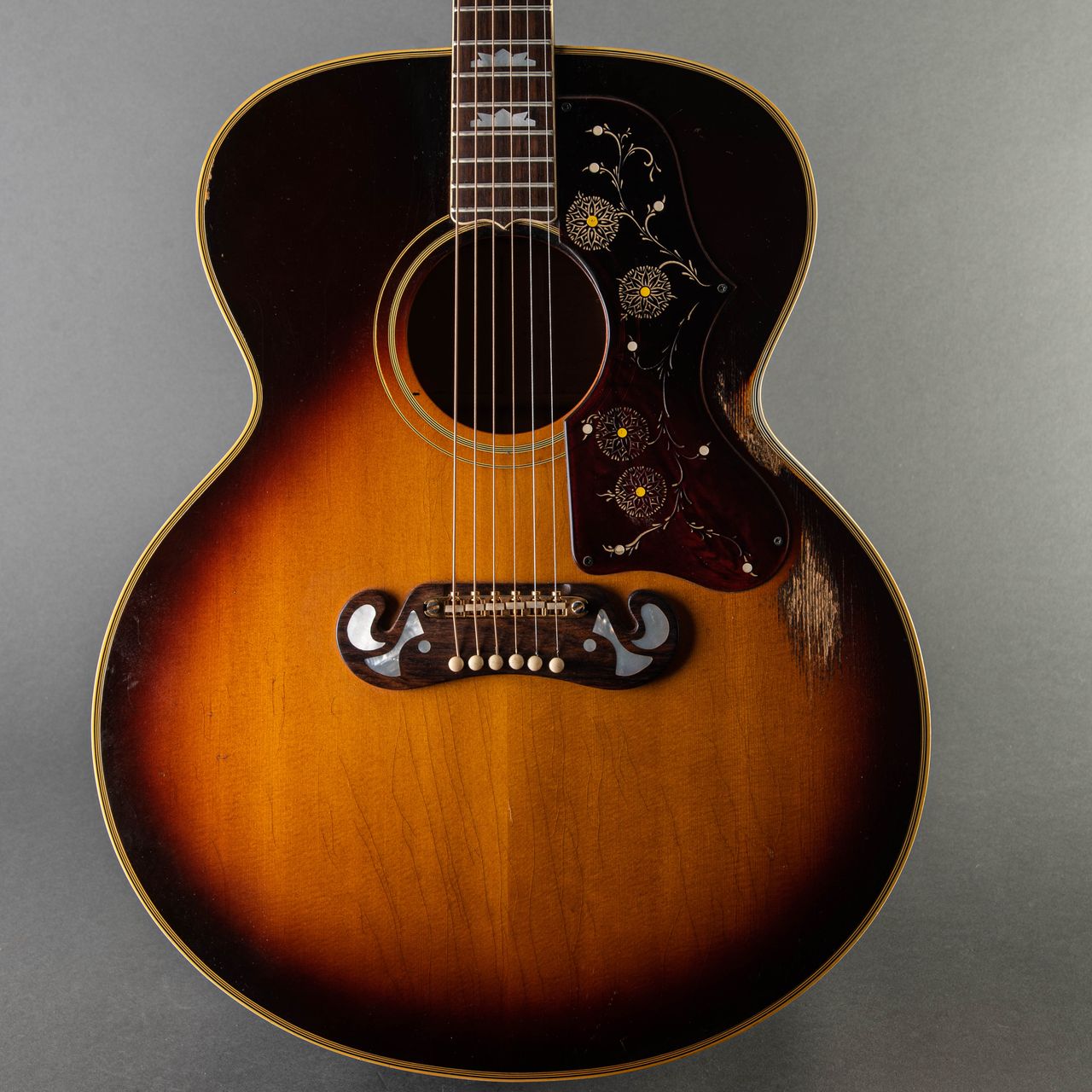 The first refrain is then heard which, when listened to carefully, can actually be measured out to be seven full measures in 4/4 time even though measures six and seven are laid out as four triplets followed by a straight measure of 2/4. Instrumentally, George's vocals and double-tracked acoustic guitars fill the first five measures along with the first appearance of the string section. The second “here comes the sun” phrase, as well as “it's all right,” is joined by George and Paul's double-tracked backing vocals, these appearing in measures three through five. When the intricate triplet guitar figure appears in the sixth measure, the vocals disappear while the drums and bass kick in for the first time to round out the verse while the strings accentuate the melody line played by the guitars. Ringo's strategically played drum fill during this section ends with a cymbal crash on the downbeat of the first vocal verse that appears next. The first refrain is then heard which, when listened to carefully, can actually be measured out to be seven full measures in 4/4 time even though measures six and seven are laid out as four triplets followed by a straight measure of 2/4. Instrumentally, George's vocals and double-tracked acoustic guitars fill the first five measures along with the first appearance of the string section. The second “here comes the sun” phrase, as well as “it's all right,” is joined by George and Paul's double-tracked backing vocals, these appearing in measures three through five. When the intricate triplet guitar figure appears in the sixth measure, the vocals disappear while the drums and bass kick in for the first time to round out the verse while the strings accentuate the melody line played by the guitars. Ringo's strategically played drum fill during this section ends with a cymbal crash on the downbeat of the first vocal verse that appears next.
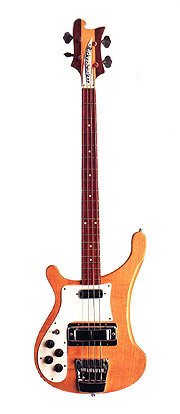 This is actually the second verse, which continues George's lead vocal work that is harmonized by Paul and himself both times that the phrase “little darling” is heard, these being in the first and fifth measures, while George continues his beautiful acoustic guitar playing. Ringo plods away nicely with a simple drum pattern focused on the closed hi-hat while Paul plays a simple but appropriate figure on his Rickenbacker bass. The strings follow along nicely through all of these measures to act as a pad to fill out the sound. This is actually the second verse, which continues George's lead vocal work that is harmonized by Paul and himself both times that the phrase “little darling” is heard, these being in the first and fifth measures, while George continues his beautiful acoustic guitar playing. Ringo plods away nicely with a simple drum pattern focused on the closed hi-hat while Paul plays a simple but appropriate figure on his Rickenbacker bass. The strings follow along nicely through all of these measures to act as a pad to fill out the sound.
 Then comes the second refrain which, this time, includes the full instrumentation as heard in the verse that precedes it. Both “here comes the sun” phrases, as well as “it's all right,” are now sung with backing harmonies. A briefly heard injection of synthesizer can be detected in measure two during the “doot-n-doo-doo” vocal line. One difference with this refrain is that it contains an extra measure that acts as a transition to the verse that follows it, making this refrain a full eight measures long. This extra measure continues the same instrumentation but allows Ringo to inject an additional drum fill in measure eight to lead into the next verse. Then comes the second refrain which, this time, includes the full instrumentation as heard in the verse that precedes it. Both “here comes the sun” phrases, as well as “it's all right,” are now sung with backing harmonies. A briefly heard injection of synthesizer can be detected in measure two during the “doot-n-doo-doo” vocal line. One difference with this refrain is that it contains an extra measure that acts as a transition to the verse that follows it, making this refrain a full eight measures long. This extra measure continues the same instrumentation but allows Ringo to inject an additional drum fill in measure eight to lead into the next verse.
 The third verse and fourth refrain come next, both of which essentially consist of the same instrumentation and vocal elements as heard previously. One addition here, however, is the synthesizer playing along with George's vocal melody line, this trailing off in a descending fashion in the eighth measure, not unlike what was heard in the instrumental first verse. The synthesizer also continues to be heard playing the intricate triplet melody line in the latter measures of the refrain that follows. The second addition is an electric guitar being played on top of the “doot-n-doo-doo” in the second measure of the refrain, this trailing off into the third measure thereafter. The third verse and fourth refrain come next, both of which essentially consist of the same instrumentation and vocal elements as heard previously. One addition here, however, is the synthesizer playing along with George's vocal melody line, this trailing off in a descending fashion in the eighth measure, not unlike what was heard in the instrumental first verse. The synthesizer also continues to be heard playing the intricate triplet melody line in the latter measures of the refrain that follows. The second addition is an electric guitar being played on top of the “doot-n-doo-doo” in the second measure of the refrain, this trailing off into the third measure thereafter.
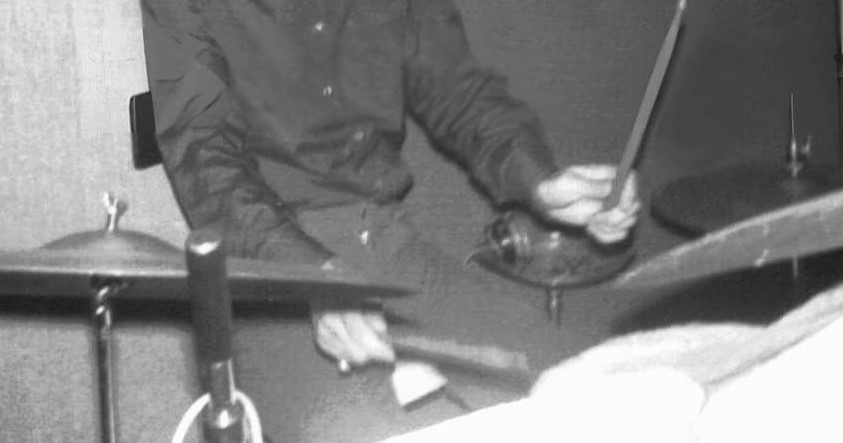 One interesting feature of this third refrain is how it concludes. Considering what George described to Ringo as a “seven-and-a-half time” song, as mentioned above, the guitar figure that encompasses the bridge that follows this refrain begins this strange time signature. Therefore, half of the final beat of the eighth measure of this refrain appears to be chopped off, making the final measure 7/8 time. First to be heard, though are two accent beats from all of the instruments in that 7/8 measure. These accent beats are then followed by the first three notes of George's complicated guitar figure that continues into the bridge that follows. One interesting feature of this third refrain is how it concludes. Considering what George described to Ringo as a “seven-and-a-half time” song, as mentioned above, the guitar figure that encompasses the bridge that follows this refrain begins this strange time signature. Therefore, half of the final beat of the eighth measure of this refrain appears to be chopped off, making the final measure 7/8 time. First to be heard, though are two accent beats from all of the instruments in that 7/8 measure. These accent beats are then followed by the first three notes of George's complicated guitar figure that continues into the bridge that follows.
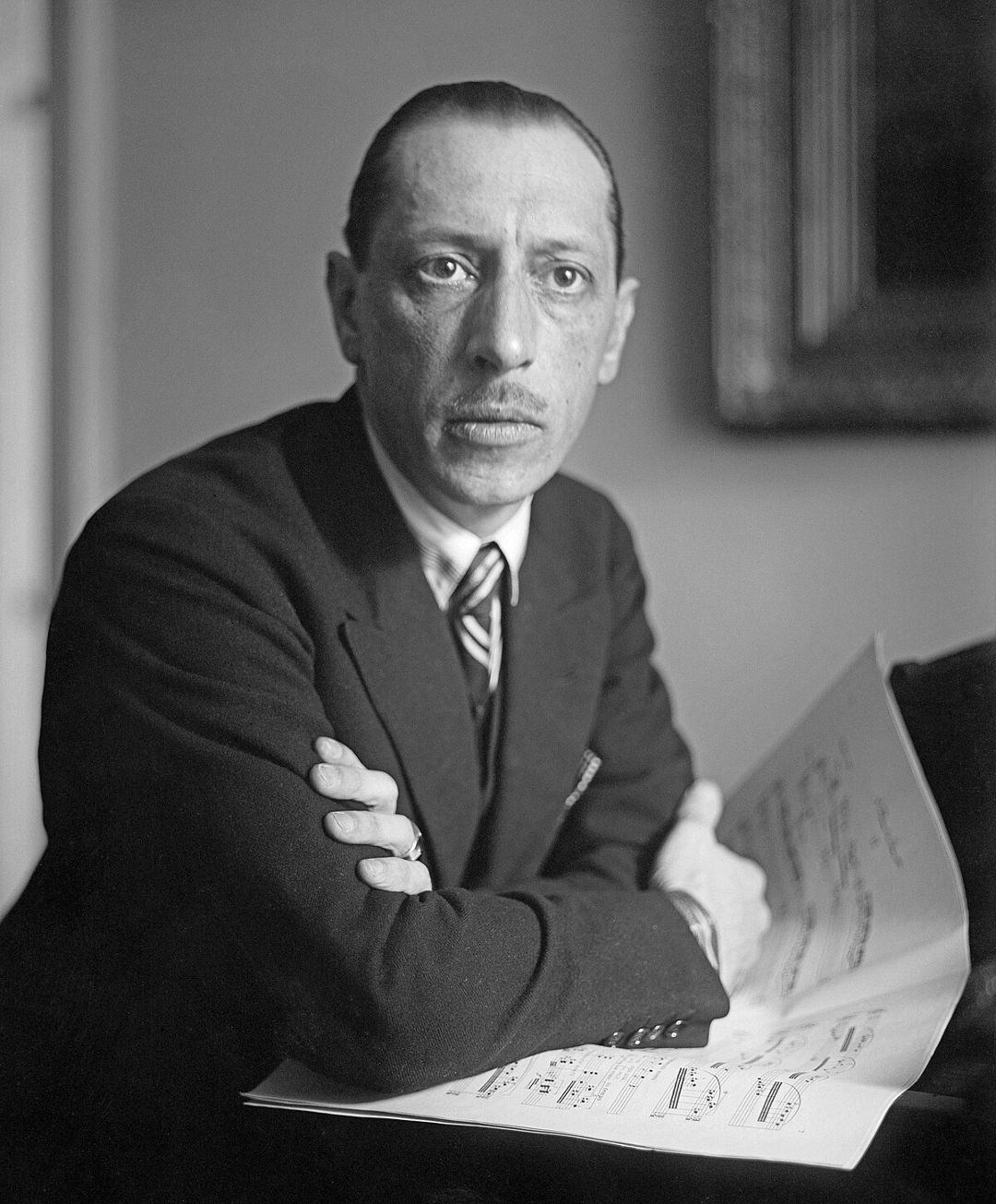 The bridge consists of a total of twenty-one measures, which parses out to six sets of three measures of odd time signatures followed by three measures in standard 4/4 time. American musicologist Alan W. Pollock, in his online “Notes On...Series,” explains this inventive three-measure set this way: “The meters of these three measures are 11/8, 4/4, and 7/8, respectively. The special effect of running even eighth notes accented as if triplets against the grain of the underlying backbeat is carried to a point more reminiscent of Stravinsky than of The Beatles. Compared to the refrain section of this song, no attempt is made at all here to make the arithmetic balance out in the end; quite the opposite.” The bridge consists of a total of twenty-one measures, which parses out to six sets of three measures of odd time signatures followed by three measures in standard 4/4 time. American musicologist Alan W. Pollock, in his online “Notes On...Series,” explains this inventive three-measure set this way: “The meters of these three measures are 11/8, 4/4, and 7/8, respectively. The special effect of running even eighth notes accented as if triplets against the grain of the underlying backbeat is carried to a point more reminiscent of Stravinsky than of The Beatles. Compared to the refrain section of this song, no attempt is made at all here to make the arithmetic balance out in the end; quite the opposite.”
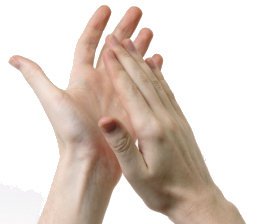 The first of the three-measure sets consist of George on double-tracked acoustic guitar, Paul on bass and Ringo on drums, he playing a slight drum fill at the end followed by three beats on top of the repeat of George's first three guitar notes in anticipation of the second three-measure set. This second set is then joined by double-tracked harmonies from George and Paul singing “sun, sun, sun, here it comes,” these appearing during the second 11/8 measure of the bridge. The 7/8 measure of this second set brings in a low-toned synthesizer sound which continues for the rest of the bridge while raising by an octave with each successive three-measure set. The third three-measure set brings in the intricate hand-clapping overdub mentioned above as well as the orchestra which is somewhat low in the mix. The first of the three-measure sets consist of George on double-tracked acoustic guitar, Paul on bass and Ringo on drums, he playing a slight drum fill at the end followed by three beats on top of the repeat of George's first three guitar notes in anticipation of the second three-measure set. This second set is then joined by double-tracked harmonies from George and Paul singing “sun, sun, sun, here it comes,” these appearing during the second 11/8 measure of the bridge. The 7/8 measure of this second set brings in a low-toned synthesizer sound which continues for the rest of the bridge while raising by an octave with each successive three-measure set. The third three-measure set brings in the intricate hand-clapping overdub mentioned above as well as the orchestra which is somewhat low in the mix.
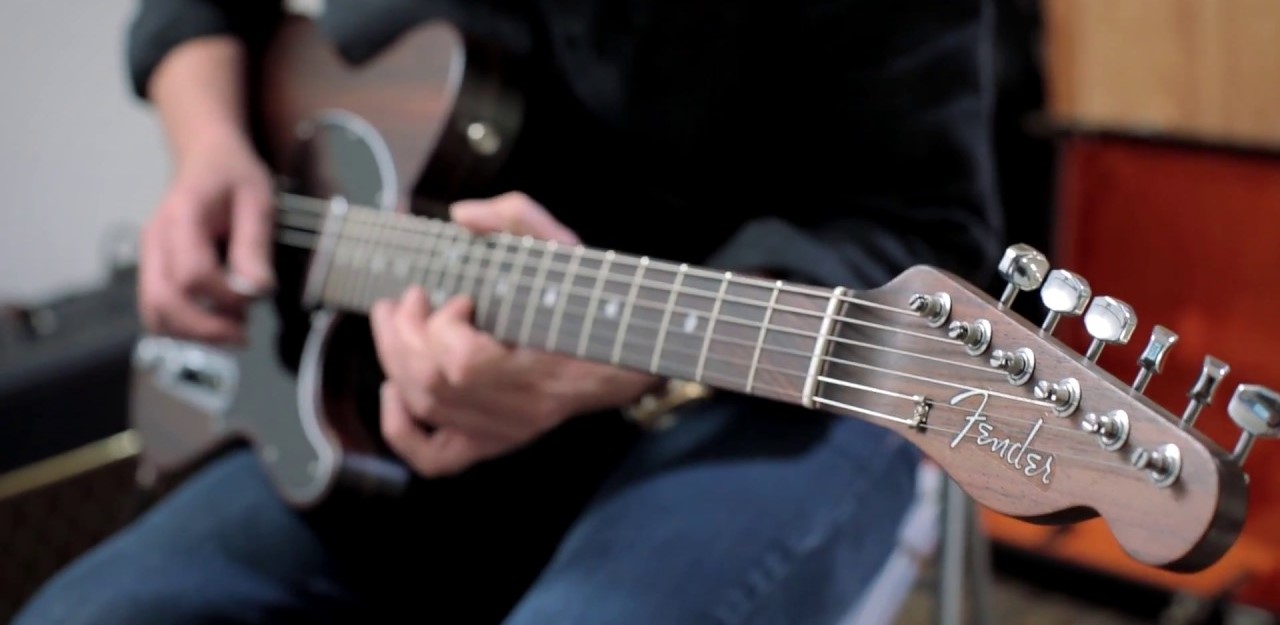 As the bridge reaches a crescendo during its sixth three-measure set, the final three 4/4 measures continue the same instrumentation, including a tricky hand-clapping pattern. Also, high pitched synthesizer notes mimic George's ending guitar phrases that act as a transition to the verse that follows. Possibly somewhat confused by the whole process, Ringo adds drum fills at the end of measures eighteen and twenty and not in the final twenty-first measure where it would be expected to appear. Nonetheless, it all worked together most impressively! As the bridge reaches a crescendo during its sixth three-measure set, the final three 4/4 measures continue the same instrumentation, including a tricky hand-clapping pattern. Also, high pitched synthesizer notes mimic George's ending guitar phrases that act as a transition to the verse that follows. Possibly somewhat confused by the whole process, Ringo adds drum fills at the end of measures eighteen and twenty and not in the final twenty-first measure where it would be expected to appear. Nonetheless, it all worked together most impressively!
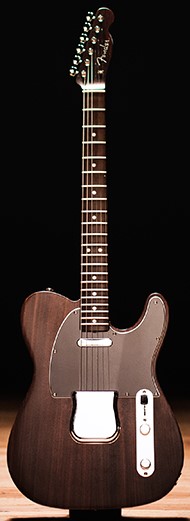 After the dust settles from this climactic bridge, we settle down nicely into the final verse, which is essentially identical to previous verses with the addition of a gentle and soothing counter-melody from George on synthesizer. This is followed by a twice repeated refrain to end the song, the synthesizer counter-melody line continuing nicely as the orchestra provides a beautiful backdrop. The last refrain is actually extended to ten measures due to a repeat of the final two measures of the refrain that contain George's guitar figure. This happens just after all vocalists repeat one last “it's all right” in the eighth measure with George appropriately dipping the final word in anticipation of the repeated guitar phrase. As Ringo's final cymbal crash rings out and the majority of the other instruments fade away, George once again repeats the 11/8 measure guitar phrase from the bridge to act as the song's conclusion with only a simple synthesizer note accompanying the final gorgeous guitar strum. Thus ends the George Harrison songwriting era within The Beatles. After the dust settles from this climactic bridge, we settle down nicely into the final verse, which is essentially identical to previous verses with the addition of a gentle and soothing counter-melody from George on synthesizer. This is followed by a twice repeated refrain to end the song, the synthesizer counter-melody line continuing nicely as the orchestra provides a beautiful backdrop. The last refrain is actually extended to ten measures due to a repeat of the final two measures of the refrain that contain George's guitar figure. This happens just after all vocalists repeat one last “it's all right” in the eighth measure with George appropriately dipping the final word in anticipation of the repeated guitar phrase. As Ringo's final cymbal crash rings out and the majority of the other instruments fade away, George once again repeats the 11/8 measure guitar phrase from the bridge to act as the song's conclusion with only a simple synthesizer note accompanying the final gorgeous guitar strum. Thus ends the George Harrison songwriting era within The Beatles.
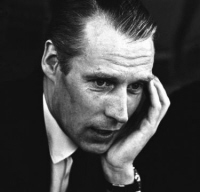 This brilliant composition and production was the result of George Harrison being finally given free reign and studio time to fully articulate his thoughts and present himself satisfactorily. Paul did well in taking a backseat as an instrumentalist and arranger to let George take the lead, instructing Paul and Ringo in the intricacies of what he had in mind, undoubtedly allowing George Martin to put his two cents in at times to turn his song into a magnificent presentation. Harrison's guitar work is stellar and well thought-out, along with his finishing touches on Moog synthesizer. Ringo's predominantly flawless performance was due to his painstaking study of what George wanted, and Paul cooperated appropriately on backing vocals and suitable bass playing that wasn't too gaudy. This brilliant composition and production was the result of George Harrison being finally given free reign and studio time to fully articulate his thoughts and present himself satisfactorily. Paul did well in taking a backseat as an instrumentalist and arranger to let George take the lead, instructing Paul and Ringo in the intricacies of what he had in mind, undoubtedly allowing George Martin to put his two cents in at times to turn his song into a magnificent presentation. Harrison's guitar work is stellar and well thought-out, along with his finishing touches on Moog synthesizer. Ringo's predominantly flawless performance was due to his painstaking study of what George wanted, and Paul cooperated appropriately on backing vocals and suitable bass playing that wasn't too gaudy.
American Releases
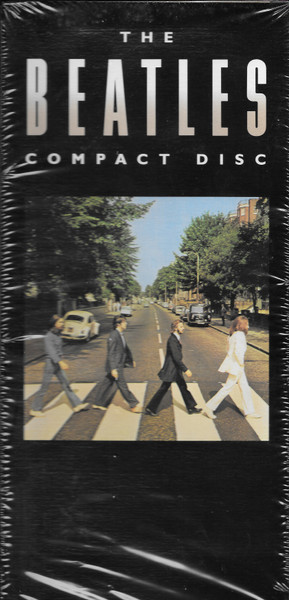 On October 1st, 1969, the final recorded Beatles album was released in America, simply titled "Abbey Road." "Here Comes The Sun" had the prestigious honor of being the opening track of side two, which was very well deserved considering its upbeat feel and commercial appeal. The album took only three weeks to jump into the top spot on the Billboard album chart, raking in a total of eleven weeks in the #1 position. The album first appeared on compact disc on October 10th, 1987, and then as a remastered release on September 9th, 2009. A 50th Anniversary CD and vinyl release occurred on September 27th, 2019, not to mention an opaque green vinyl edition coming out on October 10th, 2025 as an exclusive release available only at Target Department Stores. On October 1st, 1969, the final recorded Beatles album was released in America, simply titled "Abbey Road." "Here Comes The Sun" had the prestigious honor of being the opening track of side two, which was very well deserved considering its upbeat feel and commercial appeal. The album took only three weeks to jump into the top spot on the Billboard album chart, raking in a total of eleven weeks in the #1 position. The album first appeared on compact disc on October 10th, 1987, and then as a remastered release on September 9th, 2009. A 50th Anniversary CD and vinyl release occurred on September 27th, 2019, not to mention an opaque green vinyl edition coming out on October 10th, 2025 as an exclusive release available only at Target Department Stores.
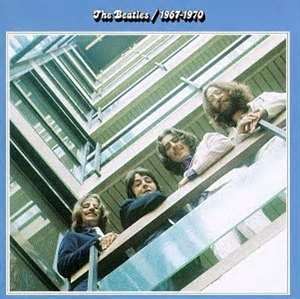 The next official release of the song was on April 2nd, 1973, on the second of two double compilation-albums released on that day, namely “The Beatles / 1967-1970” (aka, the “Blue Album”). “Here Comes The Sun” was featured as the opening track on side four, with George's equally respected track “Something” as track number three, showing that his songwriting skills had flourished as The Beatles' career was winding down. This #1 album was first released on compact disc on September 20th, 1993 and then as a remastered re-release on August 10th, 2010. The next official release of the song was on April 2nd, 1973, on the second of two double compilation-albums released on that day, namely “The Beatles / 1967-1970” (aka, the “Blue Album”). “Here Comes The Sun” was featured as the opening track on side four, with George's equally respected track “Something” as track number three, showing that his songwriting skills had flourished as The Beatles' career was winding down. This #1 album was first released on compact disc on September 20th, 1993 and then as a remastered re-release on August 10th, 2010.
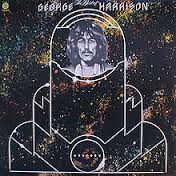 Interestingly, in the mid 1970's, all four individual Beatles had solo “Greatest Hits” albums released, but only one of them dipped into their contribution to The Beatles catalog. “The Best Of George Harrison,” which was released on November 8th, 1976, contained seven Harrison-penned Beatles songs on side one and six solo compositions on side two. “Here Comes The Sun” appeared as the third track on side one, this song being an obvious choice for such a representation of George's accomplishments within The Beatles. The album peaked at #31 on the Billboard album chart and was released on CD in 1987. Interestingly, in the mid 1970's, all four individual Beatles had solo “Greatest Hits” albums released, but only one of them dipped into their contribution to The Beatles catalog. “The Best Of George Harrison,” which was released on November 8th, 1976, contained seven Harrison-penned Beatles songs on side one and six solo compositions on side two. “Here Comes The Sun” appeared as the third track on side one, this song being an obvious choice for such a representation of George's accomplishments within The Beatles. The album peaked at #31 on the Billboard album chart and was released on CD in 1987.
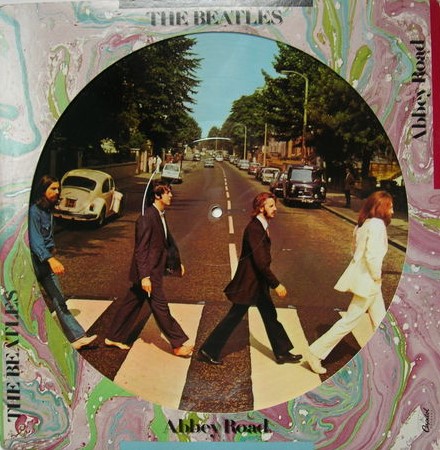 Sometime in 1978, Capitol re-released the "Abbey Road" album as a picture disc. Side one had the iconic front cover while side two contained a close-up of the wall photo of the back cover minus the song title listings. This release quickly went out of print but was eventually re-released on 180-gram vinyl on September 27th, 2019 for its 50th Anniversary. Sometime in 1978, Capitol re-released the "Abbey Road" album as a picture disc. Side one had the iconic front cover while side two contained a close-up of the wall photo of the back cover minus the song title listings. This release quickly went out of print but was eventually re-released on 180-gram vinyl on September 27th, 2019 for its 50th Anniversary.
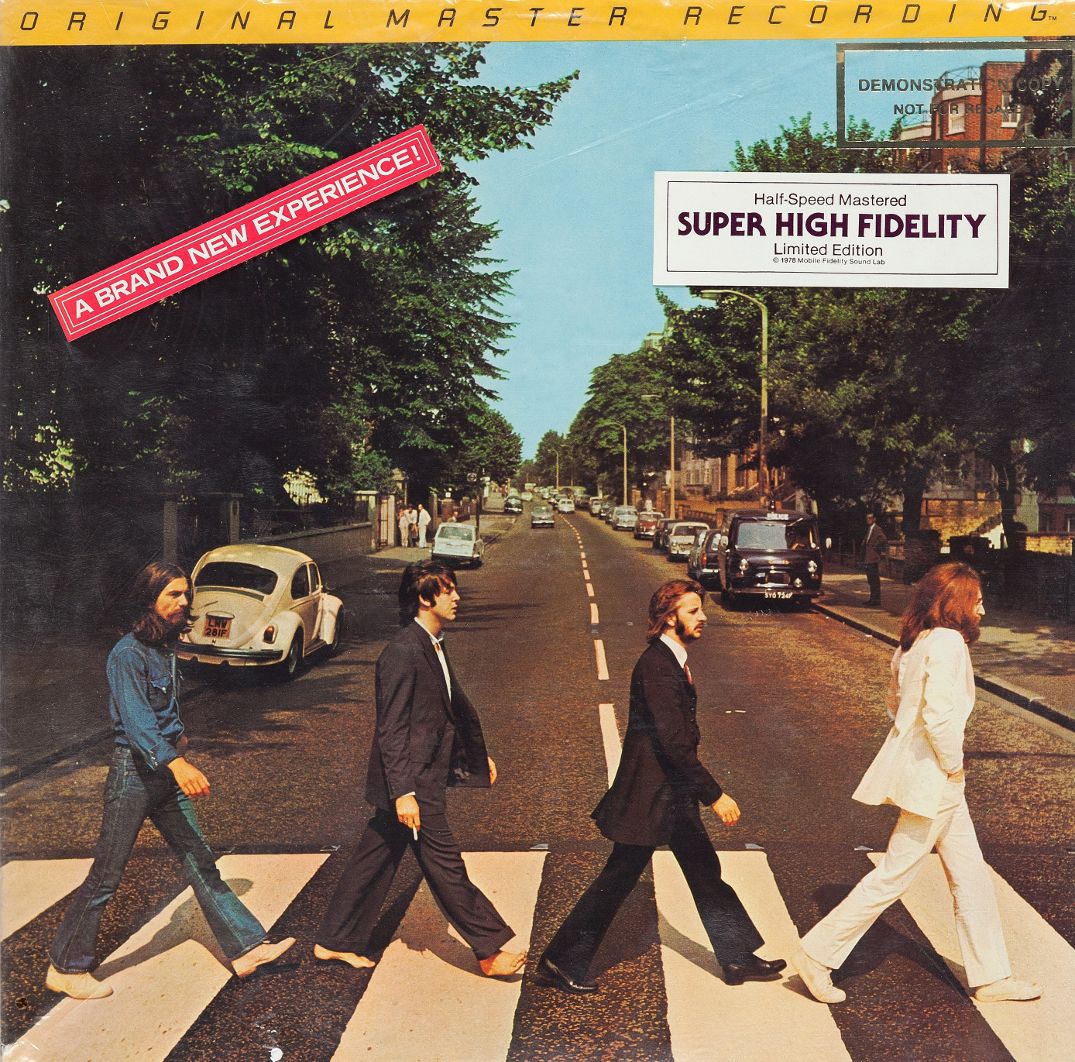 An interesting US vinyl edition of “Abbey Road” was released on December 28th, 1979, this being manufactured by Mobile Fidelity Sound Lab in Chatsworth, California as the first Beatles installment in their "Original Master Recording" series. Their practice was to prepare a new master utilizing half-speed mastering technology from the original master tapes, in this case using the leased sub-master from Capitol Records. Stickers on the shrinkwrap proclaimed this album as being “A Brand New Experience,” which proved to be the case. This version of the album sounded superior to all previous British and American pressings at that time. Unfortunately, this excellent edition of “Abbey Road” was only available for a short time and is quite collectible today. An interesting US vinyl edition of “Abbey Road” was released on December 28th, 1979, this being manufactured by Mobile Fidelity Sound Lab in Chatsworth, California as the first Beatles installment in their "Original Master Recording" series. Their practice was to prepare a new master utilizing half-speed mastering technology from the original master tapes, in this case using the leased sub-master from Capitol Records. Stickers on the shrinkwrap proclaimed this album as being “A Brand New Experience,” which proved to be the case. This version of the album sounded superior to all previous British and American pressings at that time. Unfortunately, this excellent edition of “Abbey Road” was only available for a short time and is quite collectible today.
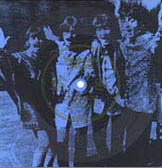 In July of 1982, Capitol/Evatone released a flexi-disc which paired “Here Comes The Sun” with the song “Magical Mystery Tour” to be given away with every Capitol Beatles album that was purchased at either “Sam Goody” “Discount” or “Musicland” record stores. This promotion appeared shortly after Capitol released the “Reel Music” Beatles compilation album, this giveaway undoubtedly coinciding with the successful sales of this album. It was printed on blue vinyl with a photo from the “I Am The Walrus” film embossed on it, the appropriate record store name also appearing on the disc. This release may be quite hard to find today. In July of 1982, Capitol/Evatone released a flexi-disc which paired “Here Comes The Sun” with the song “Magical Mystery Tour” to be given away with every Capitol Beatles album that was purchased at either “Sam Goody” “Discount” or “Musicland” record stores. This promotion appeared shortly after Capitol released the “Reel Music” Beatles compilation album, this giveaway undoubtedly coinciding with the successful sales of this album. It was printed on blue vinyl with a photo from the “I Am The Walrus” film embossed on it, the appropriate record store name also appearing on the disc. This release may be quite hard to find today.
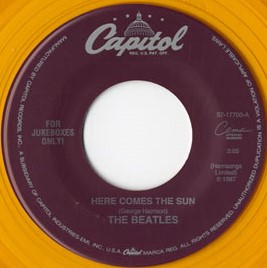 Although “Here Comes The Sun” may have been an obvious candidate for a single when the “Abbey Road” album was released due to its popularity and commercial appeal, it wasn't released as such at the time. However, Capitol did eventually release the song as a single on their Cema “For Jukeboxes Only” series in March of 1994 with the equally popular “Octopus's Garden” as the b-side. This single was printed on orange vinyl and has become quite the collector's item as time has progressed. Although “Here Comes The Sun” may have been an obvious candidate for a single when the “Abbey Road” album was released due to its popularity and commercial appeal, it wasn't released as such at the time. However, Capitol did eventually release the song as a single on their Cema “For Jukeboxes Only” series in March of 1994 with the equally popular “Octopus's Garden” as the b-side. This single was printed on orange vinyl and has become quite the collector's item as time has progressed.
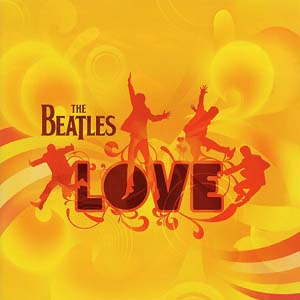 The above described new mix/mashup of “Here Comes The Sun (with 'The Inner Light' transition)” was contained on the November 20th, 2006 release “Love,” which was put together by George and Giles Martin to be used in conjunction with the Cirque du Soleil show of the same name. This successful album peaked at #4 on the Billboard album chart. The above described new mix/mashup of “Here Comes The Sun (with 'The Inner Light' transition)” was contained on the November 20th, 2006 release “Love,” which was put together by George and Giles Martin to be used in conjunction with the Cirque du Soleil show of the same name. This successful album peaked at #4 on the Billboard album chart.
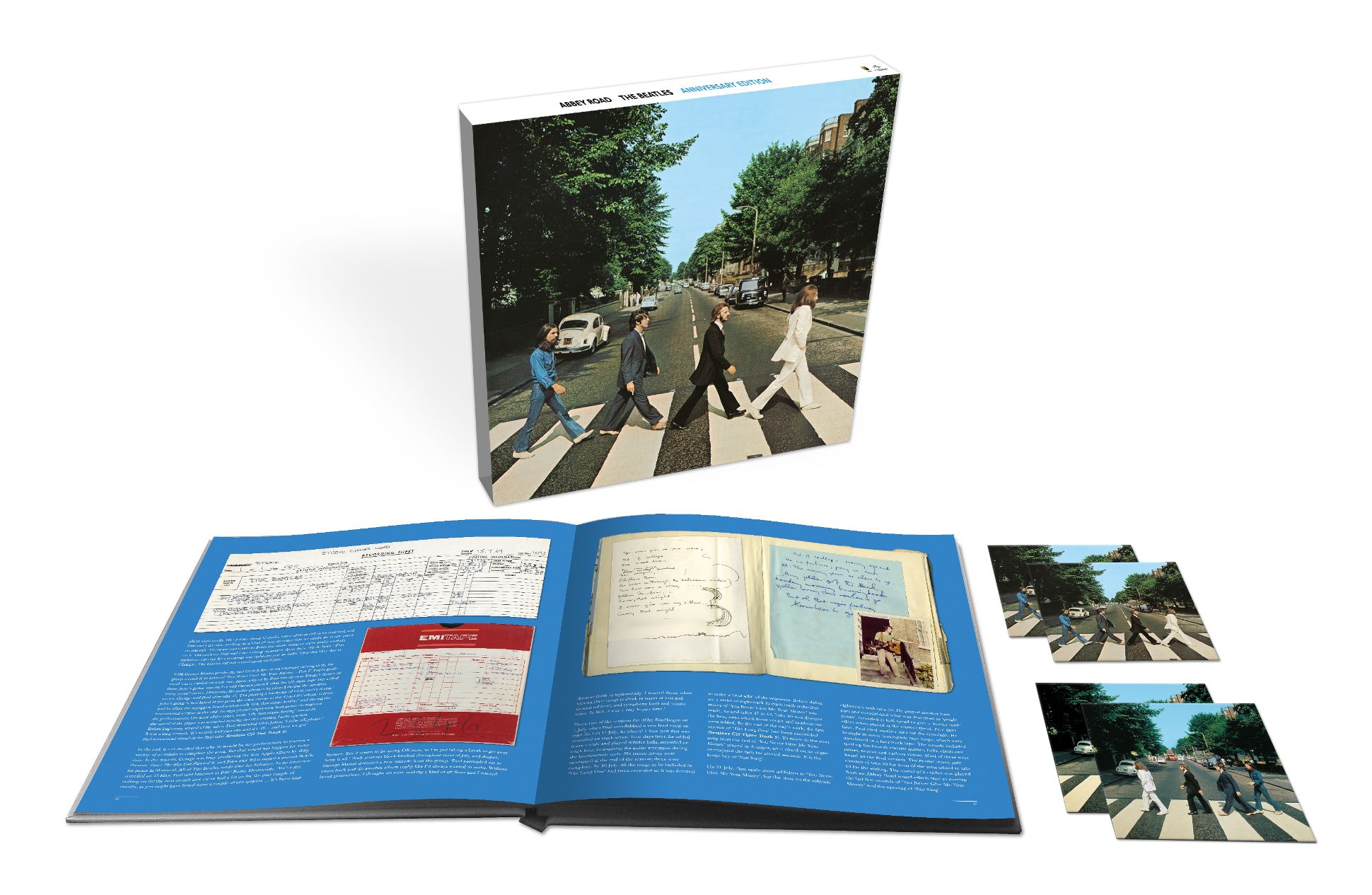 On September 27th, 2019, various editions of "Abbey Road" were released to commemorate its 50th Anniversary that featured interesting versions of "Here Comes The Sun." The "Deluxe" 2CD set, the "Triple Album" vinyl set, and the "Super Deluxe" 3CD + Blu-ray edition all contain the newly created Giles Martin mix of the entire album as well as the never-before-heard 'take nine' of the rhythm track as recorded on July 7th, 1969. On September 27th, 2019, various editions of "Abbey Road" were released to commemorate its 50th Anniversary that featured interesting versions of "Here Comes The Sun." The "Deluxe" 2CD set, the "Triple Album" vinyl set, and the "Super Deluxe" 3CD + Blu-ray edition all contain the newly created Giles Martin mix of the entire album as well as the never-before-heard 'take nine' of the rhythm track as recorded on July 7th, 1969.
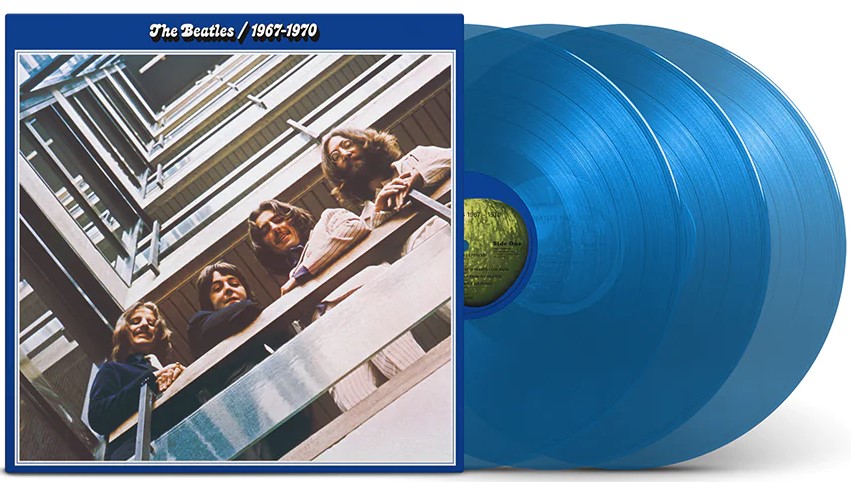 A 50th Anniversay edition of the compilation album "The Beatles / 1967 - 1970" (aka "The Blue Album") was released on November 10th, 2023, the Giles Martin stereo mix of "Here Comes The Sun" as detailed above, being included. This expanded release included 12 additional songs for a total of 38 tracks, and was made available as a double CD and as a triple vinyl release on both black and blue vinyl. A 50th Anniversay edition of the compilation album "The Beatles / 1967 - 1970" (aka "The Blue Album") was released on November 10th, 2023, the Giles Martin stereo mix of "Here Comes The Sun" as detailed above, being included. This expanded release included 12 additional songs for a total of 38 tracks, and was made available as a double CD and as a triple vinyl release on both black and blue vinyl.
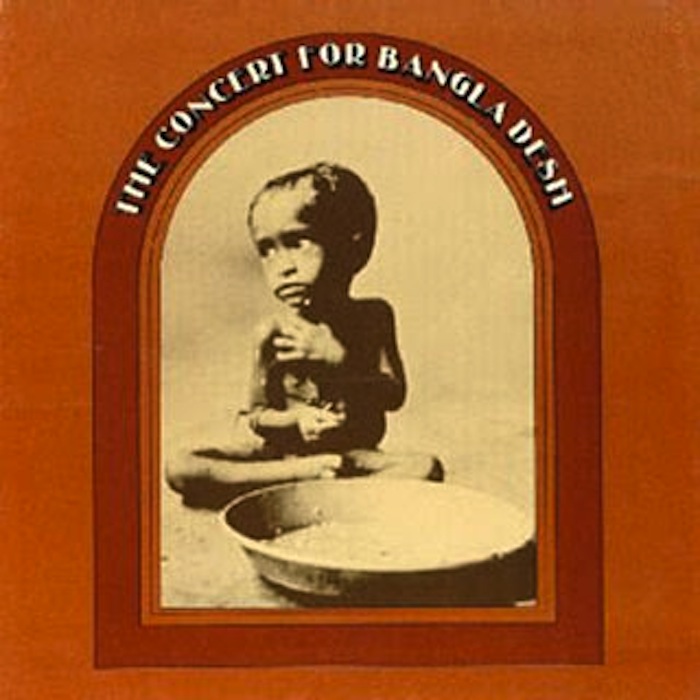 Not to be forgotten are both George Harrison live albums that contain “Here Comes The Sun,” the first being “The Concert For Bangladesh,” which was released on December 20th, 1971 and reached #2 on the Billboard album chart. So respected was this triple-album that it won the Grammy for “Album Of The Year” in 1973. It first appeared on compact disc on July 30th, 1991 and then as a remastered release on October 24th, 2005. Not to be forgotten are both George Harrison live albums that contain “Here Comes The Sun,” the first being “The Concert For Bangladesh,” which was released on December 20th, 1971 and reached #2 on the Billboard album chart. So respected was this triple-album that it won the Grammy for “Album Of The Year” in 1973. It first appeared on compact disc on July 30th, 1991 and then as a remastered release on October 24th, 2005.
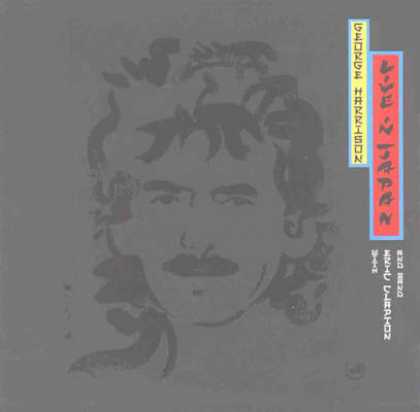 The second album to feature George performing “Here Comes The Sun” on stage was “Live In Japan,” which was released on July 13th, 1992. While peaking at a disappointing #126 on the Billboard album chart, reviews were very favorable. For instance, AllMusic editor Stephen Thomas Erlewine says that it “easily surpasses Paul McCartney's double-disc 'Tripping The Live Fantastic' or 'Paul Is Live.'" The second album to feature George performing “Here Comes The Sun” on stage was “Live In Japan,” which was released on July 13th, 1992. While peaking at a disappointing #126 on the Billboard album chart, reviews were very favorable. For instance, AllMusic editor Stephen Thomas Erlewine says that it “easily surpasses Paul McCartney's double-disc 'Tripping The Live Fantastic' or 'Paul Is Live.'"
Live Performances
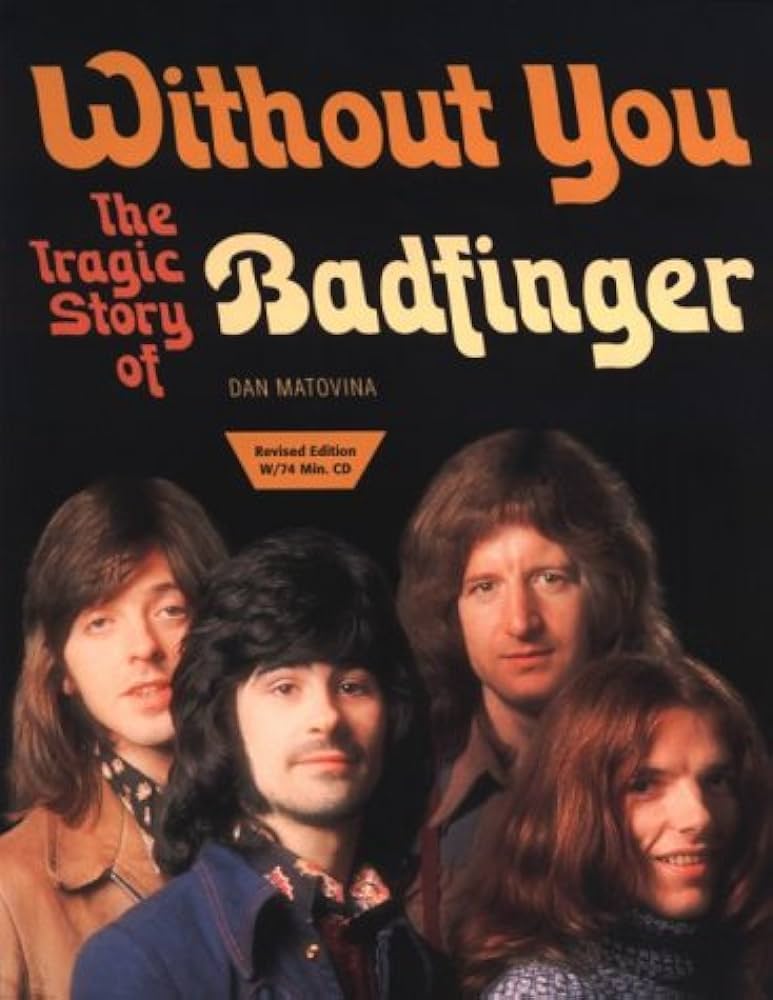 The Beatles may not have ever performed "Here Comes The Sun" on stage, but George Harrison has. The first occasion was on August 1st, 1971 at the legendary "Concert For Bangladesh." There were two performances of this concert on this day, one at 2:30 pm and then at 8 pm. Both shows included George and Bandfinger guitarist Pete Ham doing an impressive acoustic rendition of the song. "George just said he wanted to keep it simple," Pete Ham stated in interview. "He told me he used a capo on it and what changes were important. Then I went back to the hotel and listened to the 'Abbey Road' tape. We never rehearsed it - no time!" Beverly Tucker, Pete's girlfriend, relates in the book ""Without You: The Tragic Story Of Badfinger": "Pete was thrilled that someone he admired thought enought of him to do that stage spot at the Bangladesh concert. It was really a buzz for him." The Beatles may not have ever performed "Here Comes The Sun" on stage, but George Harrison has. The first occasion was on August 1st, 1971 at the legendary "Concert For Bangladesh." There were two performances of this concert on this day, one at 2:30 pm and then at 8 pm. Both shows included George and Bandfinger guitarist Pete Ham doing an impressive acoustic rendition of the song. "George just said he wanted to keep it simple," Pete Ham stated in interview. "He told me he used a capo on it and what changes were important. Then I went back to the hotel and listened to the 'Abbey Road' tape. We never rehearsed it - no time!" Beverly Tucker, Pete's girlfriend, relates in the book ""Without You: The Tragic Story Of Badfinger": "Pete was thrilled that someone he admired thought enought of him to do that stage spot at the Bangladesh concert. It was really a buzz for him."
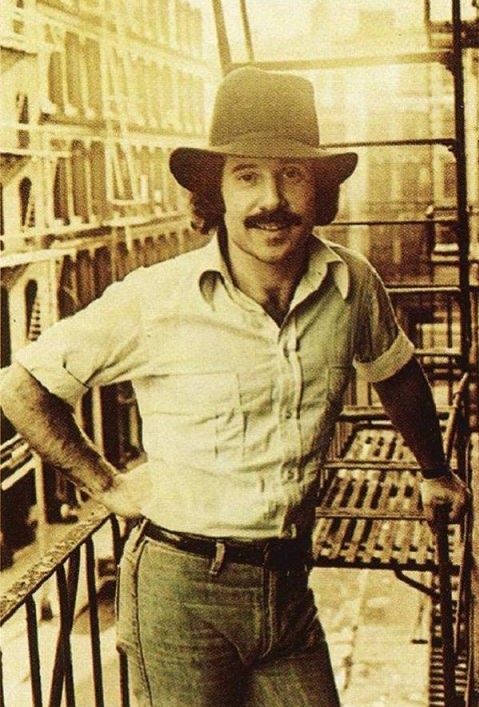 Then, on November 20th, 1976, George appeared on an episode in the second season of the popular late night NBC show “Saturday Night Live.” George pre-taped a segment of himself playing an acoustic version of “Here Comes The Sun” as a duo with Paul Simon, as well as Paul's "Homeward Bound." Then, on November 20th, 1976, George appeared on an episode in the second season of the popular late night NBC show “Saturday Night Live.” George pre-taped a segment of himself playing an acoustic version of “Here Comes The Sun” as a duo with Paul Simon, as well as Paul's "Homeward Bound."
George shied away from live performances for quite a long time, only periodically gracing a stage. His appearance at the Prince's Trust Rock Gala at Wembley Arena in London on June 5, 1987 was a welcome surprise, his performance of “Here Comes The Sun” being almost expected but very well received. This amazing star-studded performance included Elton John, Eric Clapton, Phil Collins, Jeff Lynne, Ben E. King and many others.
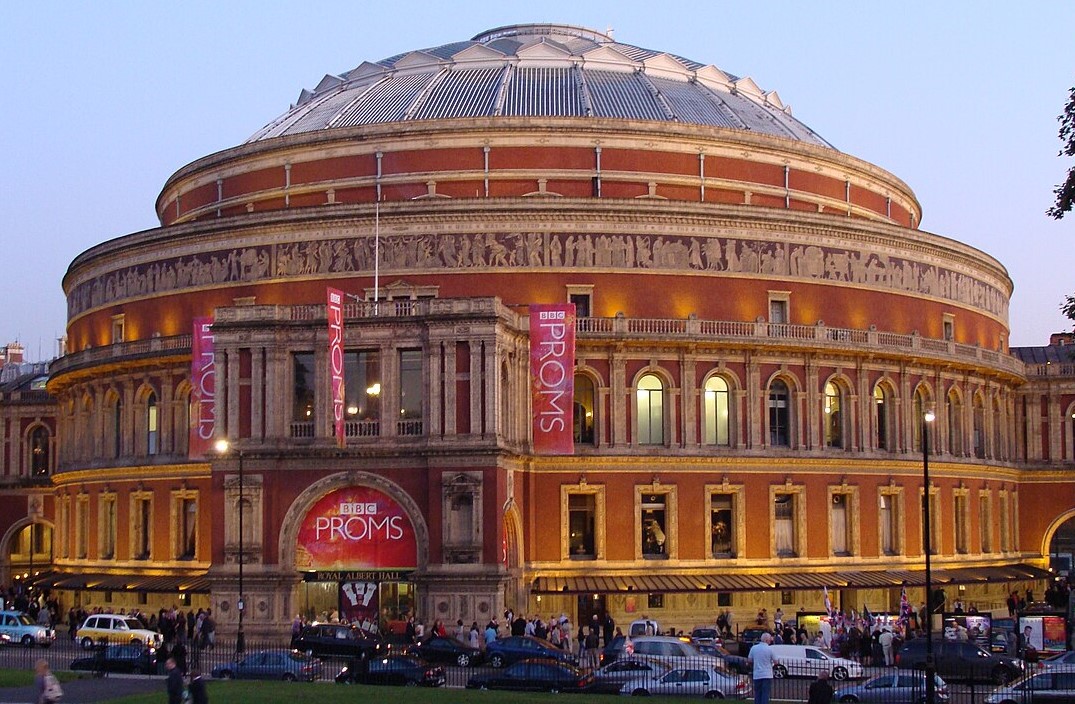 George was talked into engaging in a small Japanese tour, which spanned from December 1st through 17th, 1991, “Here Comes The Sun” being among the nine Beatles songs he performed during this tour. A few months later, on April 6th, 1992, George played a concert at London's Royal Albert Hall, this being a benefit for the Natural Law Party. This concert, his final stage performance, featured the same set list as contained in his Japanese tour, including "Here Comes The Sun." George was talked into engaging in a small Japanese tour, which spanned from December 1st through 17th, 1991, “Here Comes The Sun” being among the nine Beatles songs he performed during this tour. A few months later, on April 6th, 1992, George played a concert at London's Royal Albert Hall, this being a benefit for the Natural Law Party. This concert, his final stage performance, featured the same set list as contained in his Japanese tour, including "Here Comes The Sun."
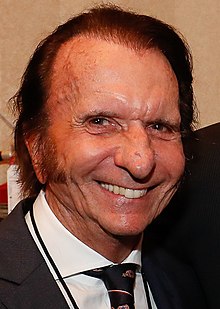 One interesting performance of "Here Comes The Sun" was made acoustically by George Harrison in honor of friend and Brazilian racing driver Emerson Fittipaldi (an inspiration for his song "Faster" as contained on his 1979 album "George Harrison"), who suffered an injury at Michigan International Speedway in 1996, thus ending his racing career. This ad-lib performance, which includes the lyrics "Hello Emo, you've been through difficult times these past couple of months...so good to see you well again...Here comes Emerson, and I say, we love you, Emerson, Emerson, Emerson Fittipaldi," was broadcast on the Brazillian TV show "Gente Que Brilha (People Who Shine)" on October 31st, 1996. One interesting performance of "Here Comes The Sun" was made acoustically by George Harrison in honor of friend and Brazilian racing driver Emerson Fittipaldi (an inspiration for his song "Faster" as contained on his 1979 album "George Harrison"), who suffered an injury at Michigan International Speedway in 1996, thus ending his racing career. This ad-lib performance, which includes the lyrics "Hello Emo, you've been through difficult times these past couple of months...so good to see you well again...Here comes Emerson, and I say, we love you, Emerson, Emerson, Emerson Fittipaldi," was broadcast on the Brazillian TV show "Gente Que Brilha (People Who Shine)" on October 31st, 1996.
Conclusion
It was very well noticed by Beatles fans and reviewers alike that George Harrison put in a very impressive showing on the "Abbey Road" album. With the news the following year that The Beatles had broken up, speculations abounded as to how each band member would do as solo artists.
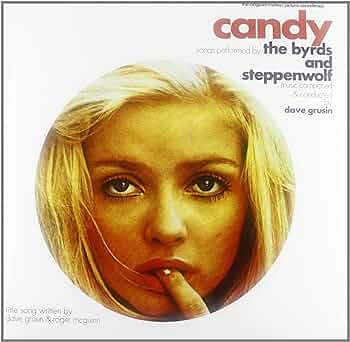 No one doubted that both John and Paul would flourish individually since they had both proven themselves abundantly in the past seven years or so. There was concern about Ringo's music career, many imagining he would continue the acting career he had begun to immerse himself in. As for George, however, having recently proven himself as a heavy-hitter in the songwriting department with both “Something” and “Here Comes The Sun,” anticipation was probably the highest for what could now be expected from the “Quiet Beatle.” After all, it was felt, he had been overlooked and overshadowed by the “Lennon / McCartney” songwriting team for so long that he must have a huge backlog of compositions that weren't allowed on Beatles albums. No one doubted that both John and Paul would flourish individually since they had both proven themselves abundantly in the past seven years or so. There was concern about Ringo's music career, many imagining he would continue the acting career he had begun to immerse himself in. As for George, however, having recently proven himself as a heavy-hitter in the songwriting department with both “Something” and “Here Comes The Sun,” anticipation was probably the highest for what could now be expected from the “Quiet Beatle.” After all, it was felt, he had been overlooked and overshadowed by the “Lennon / McCartney” songwriting team for so long that he must have a huge backlog of compositions that weren't allowed on Beatles albums.
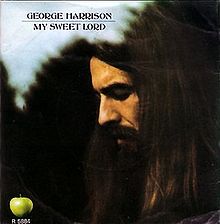 This turned out to be somewhat true. In late November of 1970, George released his first post-Beatles solo album entitled “All Things Must Pass.” And, not so surprisingly, it was a three-album box set, primarily featuring a plethora of George Harrison songs, some of which were written during the later Beatles years. Generally considered in many polls to be the best of all the former Beatles solo albums, Melody Maker magazine likened it to Greta Garbo's first talking picture by proclaiming, “Garbo talks! - Harrison is free!” Seven weeks at #1 on the US Billboard chart, along with the album's “My Sweet Lord” spending four weeks at #1 on the Billboard Hot 100, solidified that George had finally come into his own and thereby commanded due respect from the masses for his amazing talent. This turned out to be somewhat true. In late November of 1970, George released his first post-Beatles solo album entitled “All Things Must Pass.” And, not so surprisingly, it was a three-album box set, primarily featuring a plethora of George Harrison songs, some of which were written during the later Beatles years. Generally considered in many polls to be the best of all the former Beatles solo albums, Melody Maker magazine likened it to Greta Garbo's first talking picture by proclaiming, “Garbo talks! - Harrison is free!” Seven weeks at #1 on the US Billboard chart, along with the album's “My Sweet Lord” spending four weeks at #1 on the Billboard Hot 100, solidified that George had finally come into his own and thereby commanded due respect from the masses for his amazing talent.
Song Summary
“Here Comes The Sun”
Written by: George Harrison
- Song Written: April to June, 1969
- Song Recorded: July 7, 8 and 16, August 6, 11, 15 and 19, 1969
- First US Release Date: October 1, 1969
- First US Album Release: Apple #SO-383 “Abbey Road”
- British Album Release: Apple #PCS 7088 “Abbey Road”
- US Single Release: Capitol Cema #S7-17700
- Highest Chart Position: n/a
- Length: 3:04
- Key: A major
- Producers: George Martin, George Harrison
- Engineers: Phil McDonald, Geoff Emerick, John Kurlander, Alan Parsons
Instrumentation (most likely):
- George Harrison - Lead and Backing Vocals, Rhythm Guitar (1968 Gibson J-200 Sunburst), Lead Guitar (1968 Fender Rosewood Telecaster), Synthesizer (1967 Moog IIIp), handclaps
- Paul McCartney - Bass (1964 Rickenbacker 4001 S ), backing vocals, handclaps
- Ringo Starr - Drums (1968 Ludwig Hollywood Maple), handclaps
- unknown - viola
- unknown - viola
- unknown - viola
- unknown - viola
- unknown - cello
- unknown - cello
- unknown - cello
- unknown - cello
- unknown - string bass
- unknown - clarinet
- unknown - clarinet
- unknown - alto flute
- unknown - alto flute
- unknown - flute
- unknown - flute
- unknown - piccolo
- unknown - piccolo
Written and compiled by Dave Rybaczewski
|
IF YOU WOULD LIKE TO MAKE A DONATION TO KEEP THIS WEBSITE UP AND RUNNING, PLEASE CLICK BELOW!
Sign Up Below for our MONTHLY BEATLES TRIVIA QUIZ!
|